Travel to the Chuxiong Museum in Kunming
Yunnan is located in the southwest of the motherland. It is a representative area of cultural diversity and biodiversity. It is known as the "Hometown of Ethnic Minorities" and "Kingdom of Animals and Plants". In the past few years, I have visited Kunming Stone Forest, Lijiang Ancient City, Cangshan Erhai, Meili Snow Mountain and other places, and have already felt the colorful scenery in the south of the colorful clouds. The 15th Meeting of the Conference of the Parties to the United Nations Convention on Biological Diversity (COP15) held in Kunming in October 2021 demonstrated the beautiful vision of harmonious coexistence between man and nature and once again aroused my interest in travel. In mid-November, I took advantage of my spare time to visit Kunming and Chuxiong on the weekend. I wandered in the museum's treasure house of knowledge, walked among the green mountains and clear waters beside the green lake, and experienced the richness of Yundian land up close.





[Day 1] Yunnan Province Museum, Guandu Ancient Town, Kunming City Museum
[Day 2] Yunnan Railway Museum, Yunnan Ethnic Museum, Haigeng Park (Dianchi Lake)
[Day 3] Chuxiong Yi Autonomous Prefecture Museum, Kunming Cuihu Park, Yunnan Army Lecture Hall History Museum








The Yunnan Province Museum was established in 1951 and is one of the first batch of national-level museums. There are currently 227,000 pieces (sets) in the collection, including bronzes, ancient coins, ceramics, ancient calligraphy and paintings, etc., including 509 first-class cultural relics (sets) and 1390 second-class cultural relics (sets). The treasures of the town hall include the bronze ox tiger bronze case of the Warring States period, the bronze shell storage vessel of the gilded knight of the Western Han Dynasty, the bronze shell storage vessel of the war scenes of the Western Han Dynasty, the statue of Acuoye Guanyin in Dali State, Guo Xi's "Journey to the Mountains" of the Song Dynasty, Huang Gongwang's "Visiting Dai Tu Zhou" of the Yuan Dynasty, the gold crown inlaid with treasure in the Ming Dynasty, and the phoenix tail statue of the blue and white figure of the Kangxi Dynasty in the Qing Dynasty.

The main building has three floors, with a brick red exterior and a narrow slit shape derived from the "stone forest" landscape. The basic display "Yunnan Historical and Civilization Exhibition" is located on the second and third floors and consists of 6 parts, including the second floor, Ancient Yunnan-Yunnan in the prehistoric period, the light of civilization-Yunnan in the Bronze Age, and the dominance of Nanzhong-the Eastern Han Dynasty to Yunnan in the Wei and Jin Dynasties; the Miaoxiang Buddha Kingdom on the third floor-Yunnan in the Tang and Song Dynasties, Yunnan in the opening of Xinjiang and Guarding the Border-Yunnan in the Yuan, Ming and Qing Dynasties, and Yunnan in the centenary periods-Yunnan in the modern period, comprehensively demonstrating the historical development process of the red clay plateau from ancient times to the present.

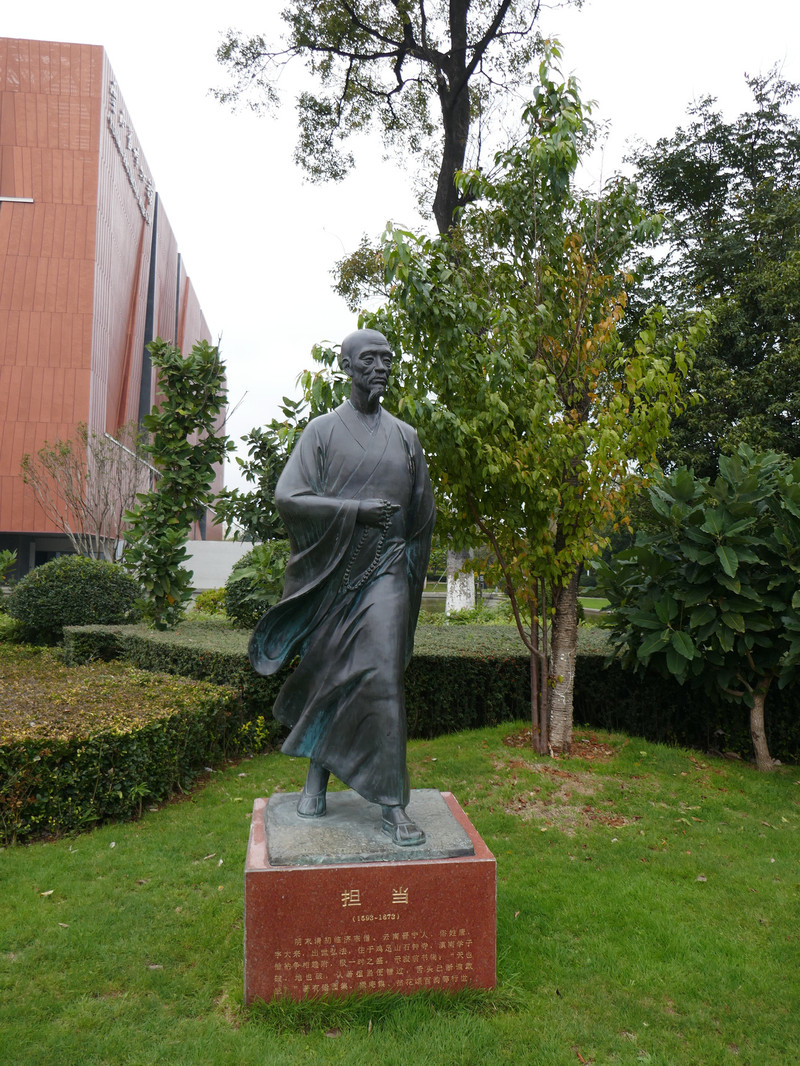
The statue of "Ren Shan" at the entrance. Dang (1593-1673) was born in Jinning, Yunnan. It is commonly known as Tang Tai, and after becoming a monk, it is named Puhe, which means that he can carry the burden of a Buddhist family. A master of the "Three Wonders" of poetry, calligraphy and painting in the late Ming and early Qing Dynasties.

The sculpture of the roc golden-winged bird is based on the gold-plated golden-winged bird inlaid with beads in the Dali State of the Song Dynasty.


The special exhibition on the first floor "Yunnan Province Achievements Exhibition Celebrating the 100th Anniversary of the Founding of the Communist Party of China"



Yunnan is an important source of human civilization. Historical relics such as the Chengjiangmao Tianshan Fossil Group, the Lufeng Dinosaur Fossil Group, the Lufeng Lamapithecus, and the Yuanmou Man have witnessed the evolution of earth's biology.

Trilobite fossils, early Paleozoic

Chuangkong crinoids, Middle Triassic


Lufeng County, Chuxiong Prefecture, Yunnan Province, is known as the "Hometown of Dinosaurs","Fossil Warehouse" and "Birthplace of Asian Humanity" due to the discovery of the world's largest dinosaur fossils and Ramapithecus fossils. In addition, dinosaur fossils have also been unearthed in Kunming, Yuxi, Honghe, Qujing, Baoshan, Zhaotong and other places.


Dinosaur fossils, Early Jurassic

Neogene mammals that developed simultaneously with the Himalayan Movement

saber-toothed tiger


Yunnan is a famous metal producing area in my country. It is rich in mineral resources such as copper and tin, and has a long history of mining and smelting. There were more than 90 types of bronzes symbolizing human civilization in the ancient Dian Kingdom, including musical instruments, ceremonial vessels, weapons, production tools, textile tools, daily necessities, decorative utensils, etc.

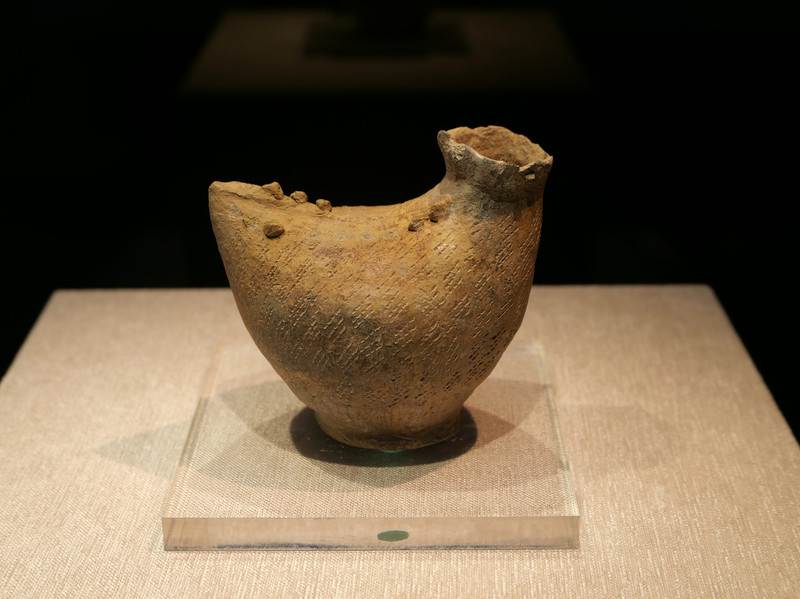
Chick-shaped pottery pot, Neolithic Age. It is 12.6 cm long, 9 cm wide and 12 cm high. The overall shape is similar to that of a chicken, with three rows of breast nail patterns on the tail and back, and the whole body is decorated with dot line patterns to make a feather shape. There is a mud nail on each side of the mouth, quite like eyes. With its ingenious conception and beautiful shape, it is a rare masterpiece of primitive social art.

Tao Qinzun first appeared on the southeastern coast of my country. This chicken-shaped pottery pot is an example of ancient cultural exchanges, indicating that Yunnan ancestors had contact with the Lingnan area more than 2000 BC.

Star stone, Neolithic age. A "sharp weapon" used by the ancients to enhance the lethality of sticks.

Bone bracelet, Neolithic age. The diameter is 8 cm and the height is 3 cm. There are 14 pieces in total, which are made of cutting, polishing and bonding bone pieces. This artifact shows that humans in the Neolithic Age had basic aesthetic awareness.

Yunnan bronze culture is a regional bronze culture developed on the basis of the local Neolithic culture and continuously absorbing the factors of the Central Plains bronze culture. It has the characteristics of "late maturity and early death". The curtain began only when the Central Plains region had entered the iron industry. When the Western Han Dynasty reached its peak, it was quickly replaced by Han culture due to the "unification" policy.

Among the bronzes of the ancient Dian Kingdom, the distinctive one was the shellfish storage vessels used to store the currency "seashells" of that time. Most of them are copper drum-shaped shellfish storage vessels, with patterns that reflect the face of social life such as "war scenes","textile scenes","curse scenes","tribute scenes" and "killing and sacrifice scenes" engraved on the cover or body of the vessel.

Battle scene copper shellfish storage cover, Western Han Dynasty. The cover is 30 cm in diameter and 12 cm in height. One of the treasures of the town hall and one of the seven treasures that appeared on CCTV's 9 program "If National Treasures Can Talk" in January 2018.

There are 13 characters cast on the cover, and in the middle is a knight. The whole body is gilded with gold, and he should be the commander. Wear a helmet and armor and belt with a sword. One person behind the horse fell to the ground, one person lying on his back in front of the horse, and three people lying on his back on his back outside, holding shields and swords to make a stabbing gesture. There were three runners behind the knight, with armor-piercing swords. One person fell to the ground at the left rear, and the other person stepped on his back. There were three more people in front of him.


Copper shellfish storage vessel for stacked drum-shaped war scenes, Western Han Dynasty. The height is 53.9 cm and the cover diameter is 33 cm. The shellfish storage vessel is made up of two copper drums with the same decoration on the body and superimposed top and bottom. A three-dimensional war scene was cast on the cover: a total of 22 characters were created. On one side were soldiers of the Dian State in a bun, including cavalry and infantry, who were well-equipped and brave in combat; on the other side were "Kunming people" with pigtails, most of whom were infantry and less equipped than the Dian State soldiers. Some had their heads cut off, some had been knocked down to the ground in a struggle, some knelt to beg for mercy, and some had their hands tied into prisoners. The shellfish storage vessel may have been made by Dian craftsmen following the will of princes and aristocrats, so they portrayed themselves as a natural winner.


Bronze pot with peacock cover and beam, Eastern Han Dynasty. This is a Han-style artifact that integrates elements of Yunnan culture. The height is 43 cm and the abdominal diameter is 27 cm. The top of the cover is a peacock with a screen open, with symmetrical double rings on its shoulders, connected by dragon-shaped lifting beams.

The world's earliest copper drum, the Wanjiaba type copper drum, was first discovered in Chuxiong, Yunnan in 1975. Later, the number of copper drums unearthed in Yunnan increased. There are also relevant cultural relics displayed in the Kunming City Museum and Chuxiong Prefecture Museum where we are going next.

Bronze Drum, Warring States. The height is 30.1 cm and the surface diameter is 39.1 cm. The center of the drum surface is decorated with twelve-awned sun patterns, with diagonal triangular patterns between the awns. Its five outer halos are formed by alternating concentric circular patterns and conical tooth patterns. There are four halos on the trunk, and the first to third halos are decorated with serrated patterns and concentric circles; the fourth halo is wider and has four groups of boat patterns. Each boat carries four to five people, creating a race shape.

Guangnan feather man boat pattern bronze drum, Western Han Dynasty. Discovered in 1919 in Guangnan County, Wenshan Prefecture. It is 46 cm high and 68 cm in diameter. The drum face is decorated with 14-awn sun patterns. There are 4 groups of drum chests decorated with boat patterns, with 4-5 characters on each boat and feathered crowns on their heads. The drum waist is decorated with cow patterns, bird patterns, dancer patterns and other patterns.


Three terracotta lanterns, Western Han Dynasty. It is 42 cm high and 48 cm wide. It is composed of four parts: arms, head and trunk. The main body is a male terracotta with a lamp on his head, kneeling on his feet, shoulders stretched out, and holding two lamps in hand.

Four-ox gilded knight's copper shellfish storage vessel, Western Han Dynasty. The height is 50 cm and the cover diameter is 25.3 cm. One of the treasures of the town hall, it was launched on CCTV's third series of cultural and cultural exploration program "National Treasures" on January 6, 2019.

This is a kind of cylindrical shellfish storage vessel with a waist waist. Each side of the waist is decorated with a tiger-shaped ear, and the tiger climbs upward. On the cover, there are four oxen running counterclockwise around the center. There is a cylindrical handle tray in the center with a gilded knight on it, wearing a sword at his waist, and the horse holding his head high and tail high. The decoration themes of the entire utensils range from animals to characters, high or low, in a random manner.



Hunting scene copper shellfish storage vessel, Western Han Dynasty. The height is 65.8 cm and the bottom diameter is 45.2 cm. In January 2018, one of the seven treasures that appeared on CCTV's 9 program "If National Treasures Can Talk".

This shellfish storage vessel is made by welding and casting two drums above and below. The upper drum cover is made separately. The feet are welded and cast with four sleeping deer, which are connected to the drum body with a snap button. The bottom of the lower drum is welded and cast, and the feet are welded and cast with 4 sleeping oxen. The cover is engraved with a three-dimensional scene of three people hunting, riding horses to chase a running deer. One person was all gilded with gold, riding a horse with another person, and another person stood in the center. There are also dogs, rabbits, foxes, tigers, pigs, hornbills and other animals as well as broad-leaved plant patterns.


Copper shellfish storage vessel for the killing pillar scene, Western Han Dynasty. The height is 38 cm and the cover diameter is 30 cm. In January 2018, one of the seven treasures that appeared on CCTV's 9 program "If National Treasures Can Talk".

This is a copper drum-shaped shellfish storage vessel that expresses the sacrificial activities of the Dian State. 52 characters and a pig and a dog are cast on the cover. In the center of the drum face stands a pair of serpents winding around it. In front of and on the right of the pillars are three people tied back or wearing clayes, who should be sacrificed for sacrifice. Next to him was an aristocratic woman carrying a sedan chair with four people. She might be the female slave owner presiding over the sacrificial ceremony. There is also a drum on each side, and the waist of the drum is a hunting pattern of eight people chasing wild beasts.


Niu Hu Bronze Case, Warring States Period. It is 43 cm high, 76 cm long and 36 cm wide. One of the treasures of the town hall and one of the seven treasures that appeared on CCTV's 9 program "If National Treasures Can Talk" in January 2018.

The main body of the artifact is a standing bull with its horns flying and its back naturally falling to form a table. At the tail is a reduced scale tiger, which makes a climbing posture and opens its mouth to bite the bull's tail. The big cow has a hollow belly and a standing calf is decorated horizontally. Daniel and tiger are formed at one time, and the calf is connected by welding.


Animal fighting scene copper shellfish storage vessel, Western Han Dynasty. A slender waist cylindrical shape, with a height of 42.8 cm. The cover is cast with a three-dimensional fighting scene of two oxen and one tiger, and the waist is cast with two tiger-shaped ears symmetrical left and right. There are two monkeys and two birds in the tree above. The two monkeys are squatting on the branches with their backs back to each other. The two birds are in panic and flap their wings about to fly.

Snake handled copper sword, gold scabbard, Western Han Dynasty

Four people and one ox copper peck, Western Han Dynasty. It is 27.5 cm long and 15 cm wide. The artifact was originally cast with four people and an ox: the first person carried a bag, the second person should be a morning glory, but unfortunately it was lost, the third person did the appearance of driving an ox, and the fourth person carried an object on his right shoulder (half of the wooden stick was left). The three of them wore the same clothes, wearing felt, short skirts and earrings. This scene seems to be related to tribute or market. Beek is a weapon unique to the Dian Kingdom. It looks like a T character overall, and the blade on the blade is long and sharp (pronounced "poor", the hole on the handle is installed on the weapon). When used, it is like a bird pecking wood, or it can be hooked and killed like a copper spear.

The chimes of King Dian, Western Han Dynasty. Bronze bells were already popular during the Western Zhou Dynasty in the Central Plains. During the Warring States Period, bands composed of chimes and chimes were mainly composed of chimes. In the Han Dynasty, musical instruments such as bells and chimes began to decline. Different from the Central Plains, the Dian State was still in use until the late Western Han Dynasty.

Most chimes in the Dian State consist of even numbers, generally 6 pieces, while most of the Central Plains have odd numbers.


Copper chimes with horns, Spring and Autumn Period
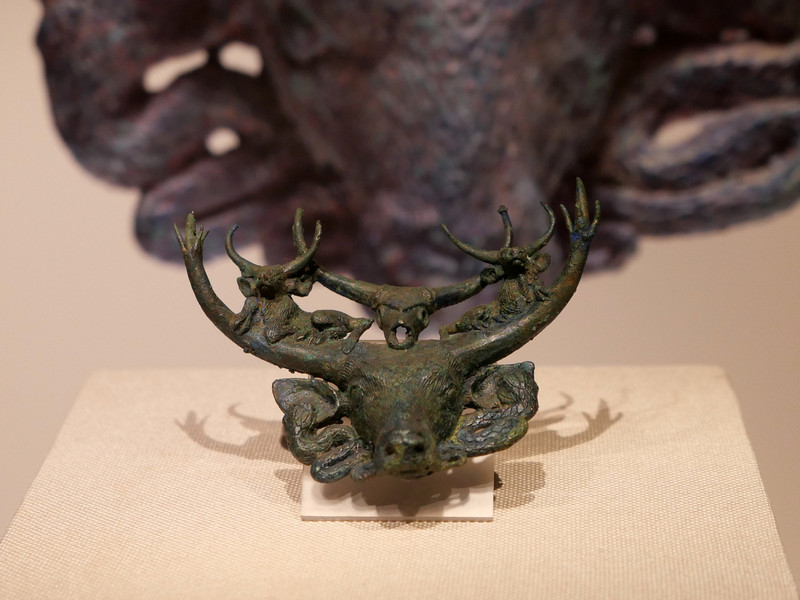
Ox head copper buckle decoration, Western Han Dynasty. A copper buckle is a kind of decoration cast in bronze and with toothed buckles on the back for wearing or hanging. It was mainly popular in the Dianchi Lake area from the Warring States to the Western Han Dynasty, and was an important part of the bronze culture of the Dian State.

Six oxen copper pillows, Warring States. The whole body is like a saddle, with both ends of the pillow body being turned upwards, each carved with a standing ox, and four oxen carved on the side.

Round gilded gold inlaid with stone and monkey edge bronze buckles, Western Han Dynasty. 13.5 centimeters in diameter. Agate and gilded gold complement each other, and the craftsmanship is exquisite. In January 2018, it was one of the seven treasures that appeared on CCTV's 9 program "If National Treasures Can Talk". The front is a round card and the middle is inlaid with red agate. There is a circle of gilded embossed little monkeys around it, which are connected end to end, giving a vivid image.

Pelican fish holding copper buckle decoration, Western Han Dynasty

Copper sword with hunting head pattern, Warring States Period. It is 28.2 centimeters long. Both sides of the sword hilt are carved with hunting heads, all with big eyes, sharp teeth and wide mouths, giving a unique image.

Cattle, horses, tigers, deer, pigs, monkeys... so many animals coexist symbiotically, vividly demonstrating the biodiversity of Yundian land.

Gilded gold and bronze buttons decorated with two leopards, Western Han Dynasty. It is 14 centimeters long and 5.4 centimeters wide. It shows the scene of two leopards fighting a desperate battle against a wild boar. One leopard pounced on the back of the wild boar, grasping the pig's shoulders and abdomen with its front paws, grasping the pig's hind legs with its rear paws, and biting the boar's back with its mouth open; the other leopard lay on his side under the boar's abdomen, with its two front paws grasping the boar's abdomen, and its hind legs were also tightly bitten by the boar.

Four people bound cattle with copper buckles, Western Han Dynasty

Bronze figurines of women holding umbrellas, Western Han Dynasty. The height is 46 centimeters. The figure sat on his knees side by side, with his head combed in a silver ingot style, his upper body wearing a collarless gown with wide sleeves, and his lower body wearing a skirt and barefoot. Wear sets of earrings on your ears and a bracelet on your hands. Raise your forearms horizontally in front of you to hold an umbrella (the umbrella is lost).

Female bronze figurines holding umbrellas, Western Han Dynasty; female figurines with bronze staff head, Warring States.

Copper house model buckle decoration, Western Han Dynasty. It is 11.5 cm high and 12 cm wide. It represents an indoor "ancestral worship" ceremony, one of the seven treasures that appeared on CCTV's 9 "If National Treasures Can Speak" program in January 2018. In ancient my country, sacrificial rituals usually said that "those who sacrifice to the inside are the ancestors, and those who sacrifice to the outside are the community." Dian State is no exception. Whenever sacrifices are made to the gods of agriculture, mountain gods, and water gods, altars are usually set up outdoors, and ancestors are sacrificed indoors. The copper house is a combination of a dry railing type and a well dry building. Giant wooden piles are used to build two-story platforms, equipped with railings and fences. In the center of the rear of the platform is a dry-type building. Men and women on the platform cook food and provide for their ancestors. There are columns on the left and right sides with cow heads hanging on them. A ladder is placed in the middle of the platform, and the ladder is embossed with snake patterns symbolizing the land and winding upwards. The land is the foundation for the growth of crops, and the whole scene seems to be a breeding ceremony related to agriculture.

Hanging copper spear, copper mace, hollow copper hammer

Bronze spear for hanging people, Western Han Dynasty. The one on the left is 30.5 centimeters long and the one on the right is 41.5 centimeters long. One person hangs on each side of the copper spear, hands tied behind his back, hair drooping, and back bent, as if he was dying. It can be seen from the details that the victim's hair was tied around the top of his head, so his hair did not appear disheveled when it fell down. This confirmed the record in Sima Qian's "Records of the Historian" about people in the Dian State wearing a bun. The use of the artifacts is still a mystery. It is speculated that they are used for certain rituals, such as sacrifices or other major activities.

Round stone-inlaid dancers decorated with copper buckles, Warring States. The diameter is 7.1 centimeters. Agate beads and turquoise beads are embedded in the center of the buckle, and a human statue is carved around the outside. There are 18 people in total, holding hands, and their legs are slightly curved to create a rotating dance.

Conical copper cover, Western Han Dynasty. An octagonal sun pattern is cast in the center, and a feather-man dance pattern is on the outside. The Kunming City Museum also has similar cultural relics with clearer patterns, but it can be clearly seen that the number of feathered people is smaller and the spacing is wider than this one.

Copper gourd sheng, Li Niu copper gourd sheng, Warring States. There are five holes on the front of the sheng and a round hole on the back. When unearthed, there were traces of broken bamboo pipes in the abdomen of the sheng, indicating that there were bamboo pipes inserted into the five holes of the original sheng.

Gilded gold two people with a plate dance bronze buckle decoration, Western Han Dynasty. The two dancers have high noses and deep eyes, holding discs in both hands, slightly open mouths, wearing tights, bent legs, singing and dancing. Their image characteristics and costumes are different from those of the Dian people, and are considered to be "exotic artists" of the ancient Dian Kingdom.

Gilded bronze buckles for eight people in music and dance, Western Han Dynasty. The buttons are divided into two rows, upper and lower, with four people in each row. The four people in the upper row are slightly spread out to create a song and dance style. The lower row is like a music pool, with one person playing a gourd sheng and the other beating a drum. The other two people are "not doing proper work" and are drinking the fine wine from the drinking cans.

For more than 700 years from the Eastern Han Dynasty to the early Tang Dynasty, there were frequent dynasties in the Central Plains, which triggered an intensification of population mobility. The migration of a large number of Han people to the south brought advanced farming methods, creating a great ethnic integration, a great cultural transformation, and a great economic development in Yunnan's history, and gradually forming a dominant power force-Nanzhong Da surname, including upper-class figures among Han immigrants and Hanized "Yi Shuai".

Pottery and other cultural relics reflecting the "blending of Han and Yi"

Taobo Mountain Furnace, Eastern Han Dynasty. A kind of incense burner named after the legendary sea immortal mountain Boshan.

Figurines playing flute and playing piano, Eastern Han Dynasty

Money cow, Eastern Han Dynasty. Various coin patterns are cast on the blades.

Image of Dian people


Silver backlit gold Acuoye Guanyin statue, Dali State of Song Dynasty. One of the treasures of the town hall. It is 29.5 cm high and weighs 1135 grams. Unearthed in Chongsheng Temple in Dali, Chihiro Pagoda is the largest pure gold Buddha statue of the Song Dynasty and the most precious Buddhist art treasure in Dali. "Acuoye" is the meaning of the teacher of Buddhist practice.


Left: Bronze Acuoye Guanyin Statue, Dali State of Song Dynasty. Right: Zunyi bronze drum, Nanzhao State in the Tang Dynasty.

Crystal sitting statue of Aji Buddha, Dali State, Song Dynasty. chü, Buddhist term. Aji Buddha is also called an immobile Buddha, which means that even if he is resentful, he will not retreat or move out of anger.

Yimou Xun Dynasty discussion plan. Yimouxun (754-808 AD) was the sixth king of Nanzhao State. Tang returned to the Tang Dynasty in the tenth year of Zhenyuan (794 AD) and was conferred the title of King of Yunnan. Since then, the culture and technology of the mainland and Han people began to spread to ethnic minority areas.

Xinulu family portrait. Xinuluo (617-674), Yi nationality, founding monarch of Nanzhao State.
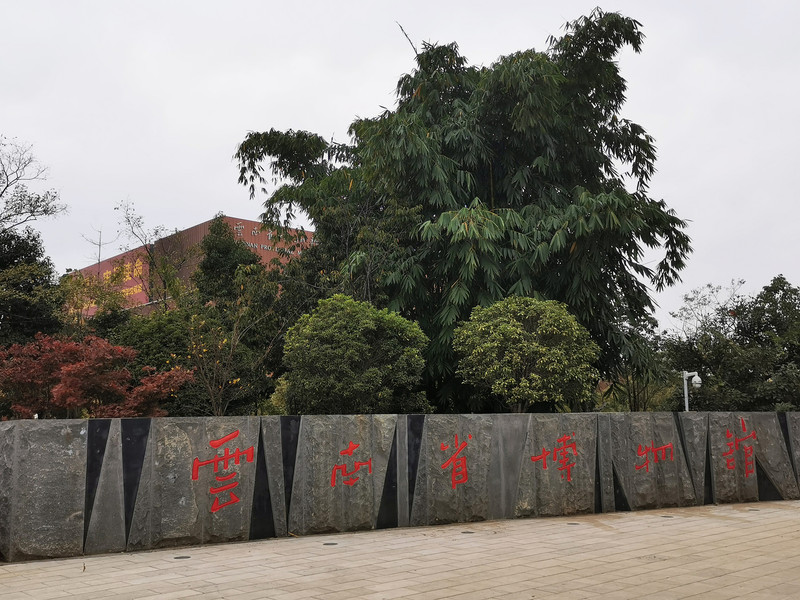

Yunnan Literature and Art Museum and Grand Theater opposite the Provincial Expo



Guandu Ancient Town is close to the Yunnan Province Museum, just a 5-minute walk away. This place was originally called Nanling and is located at the mouth of the Wuling River. During the Spring and Autumn Period, envoys of Shangyong State opened a ferry terminal here to facilitate people's passage. Because it was founded by the official government, the locals called it "Guandu", and it became a place name when it was used.

Guandu is an ancient town in a famous historical and cultural city in Kunming. It has many landscapes such as five mountains, six temples, seven pavilions, and eight temples from the Tang, Song, Yuan, Ming and Qing dynasties.

Not many tourists were met during the tour, the scenic spot was not very popular, and the business of street vendors and restaurants was not very good.

Yunzi Qiyuan

Yunzi is the abbreviation of Yunnan Weiqi. Because of its beautiful and flat appearance, it is also called Yun Bian. The production skills began in the Tang Dynasty and flourished in the Ming and Qing Dynasties. They were lost due to war in the late Qing and early Republic of China. In 1975, after repeated exploration and trial production by the 11th Middle School of Kunming City, it was finally successfully restored. In 2021, Yunzi production skills will be selected into the National Intangible Cultural Heritage List.




There are few customers and few doors are available. The ongoing COVID-19 epidemic has a great impact on the tourism industry. Take this journey as an example. From November to March of the following year, Kunming is the peak tourist season, and the prices of air tickets, hotels, etc. should increase. However, the price of air tickets from Shanghai to Kunming is as low as 10% off, and the round-trip is only just over 800 yuan. The airport construction fee is 50 yuan and the fuel surcharge is 20 yuan.





Miaozhan Temple Jingang Pagoda, also known as Miaozhan Temple Stone Pagoda and Chuanxin Pagoda, is the oldest existing sand and gravel site in my country to build a lama-style pagoda. It was built in 1458 (the second year of Tianshun in the Ming Dynasty) and renovated twice in 1696 (the 35th year of Kangxi in the Qing Dynasty) and 1982.

The tower consists of two parts: base and tower body. The base is of a square shape, with a length of 10.4 meters and a height of 4.7 meters. The bottom spans the sky, and there are four ticket gates connected by east, west, north, south and north. There are five towers above the base. The main tower is 16 meters high, representing the Tathagata of the Great Sun; the small towers at the four corners are each 8.84 meters high, clockwise representing the Tathagata of the Atathagata, the Tathagata of the Baosheng, the Tathagata of the Atathagata of the Buddha, and the Tathagata of the Buddha.



Miaozhan Temple was built in the 27th year of the Yuan Dynasty (1290). It collapsed due to flooding and moved to its current site in 1325. There are east and west twin towers built in the temple, both of which are 13-story solid square brick towers with dense eaves. Later, the West Tower was destroyed by an earthquake, and the East Tower remains to this day.


Miaozhan Temple Twin Towers

Luoyu Tower. No relevant introduction was found for this building. Historically, Guandu was part of Dianchi Lake, and snails accumulated underground. The naming of Luoyu Tower may be related to this.

The Fa Temple was built during the Nanzhao period of the Tang Dynasty (around 756 AD). It was originally built by Gao, an important official of the Dali State. The existing building was rebuilt in the 21st year of Guangxu of the Qing Dynasty (1895).


I read the guide before that there were many specialty snacks here, but I found that not many people ate them while wandering, so I didn't try them.





Kunming City Museum is also known as the "Tibetan Temple Sutra Building" because it is located on the former site of Tibetan Temple. The basic displays include the ancient building exhibition hall, bronze culture exhibition, dinosaur fossil exhibition, Kunming Flying Tigers Memorial Hall, fan fine exhibition, porcelain fine exhibition, etc.

The main building has three floors, and its appearance and style incorporate ancient architectural cultural elements such as a shaped roof, a heavenly pillar, and a bucket arch, making it solemn and elegant. The word "" and "Ming" in the name of the museum are Yan Zhenqing's calligraphy. Kunming is a national historical and cultural city, and the choice of Yan Ti characters is a kind of inheritance of history.

The "Jinbi Tenghui" bronze sculpture is 4 meters high. The design concept comes from the legend of "Golden Horse and Green Chicken" in Kunming.

In the middle of the hall stands a treasure of ancient carving art-the Dali State Classic Building of the Song Dynasty


The Jing Building is in the shape of a tower and is 6.6 meters high. It is carved from sandstone and has seven floors and eight sides. The upper layer is carved with statues of Shizun, Bodhisattva, Arhat, etc., and is equipped with palaces and pavilions. On the lower level, there are carved statues of the four heavenly kings stepping on ghost slaves, holding axes and coins, wearing armor and belts, and the Sanskrit "Dharani Sutra Mantra" is engraved next to them. There are eight boundary stones between the body and the base of the building, engraved on which scriptures such as "Buddha Said Prajna Paramiti Duo Heart Sutra" and "The Story of Building a Building." The overall shape is exquisite and the sword marks are strong. It is a precious material material for studying Yunnan Buddhist art and local history and culture during the Dali Kingdom period.
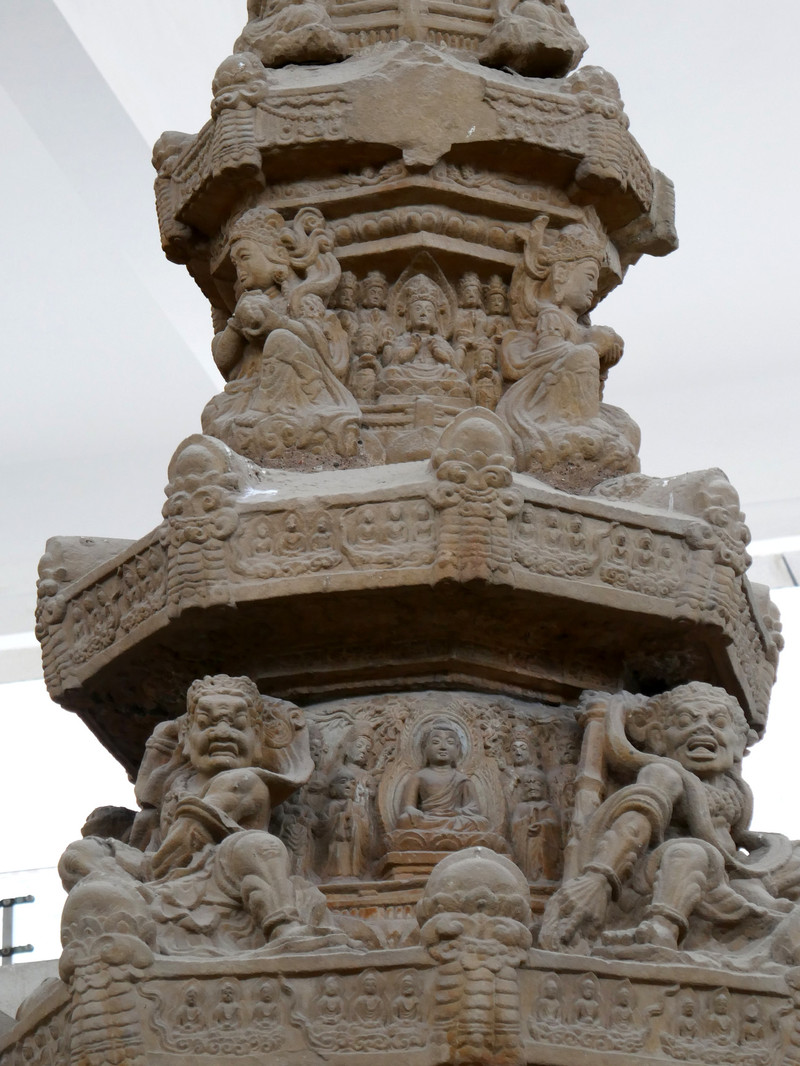
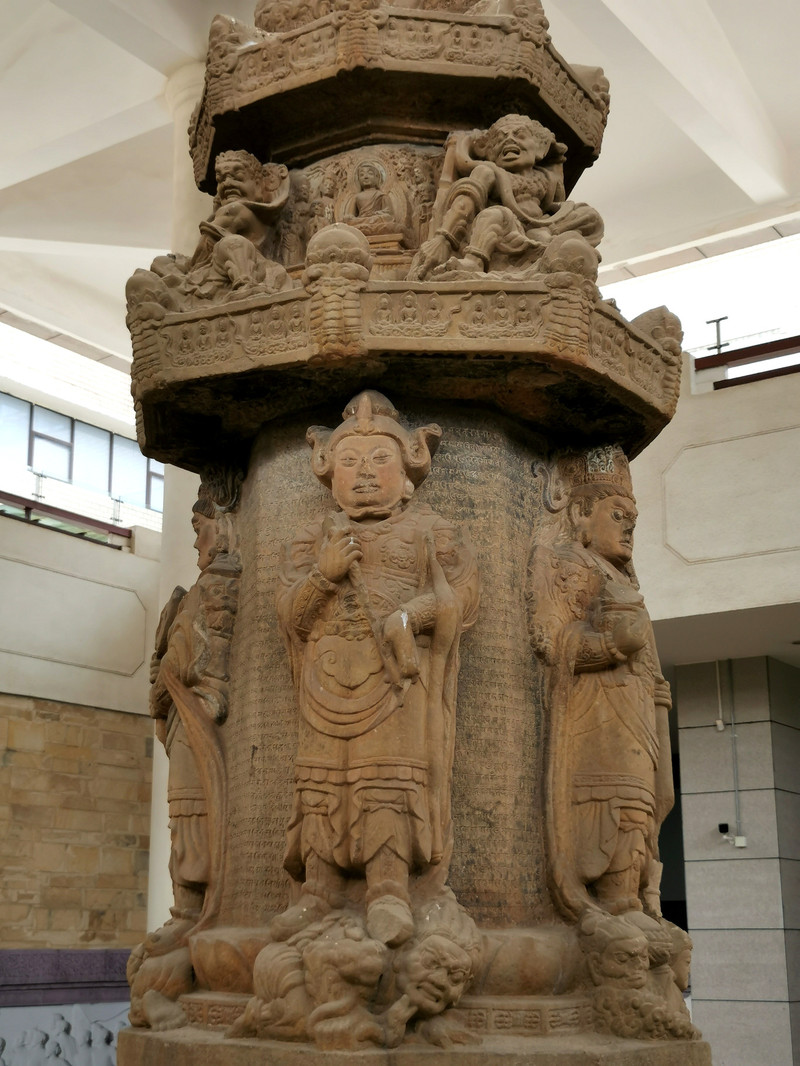

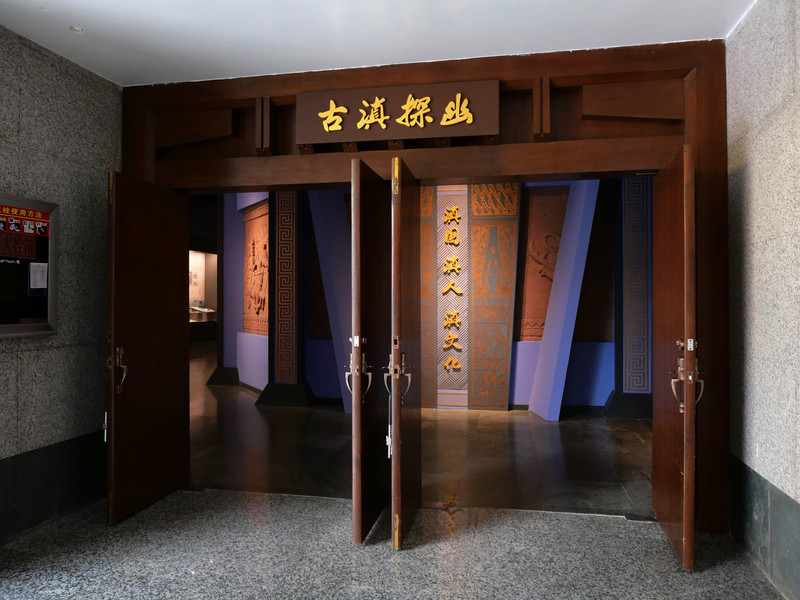
The exhibition hall "Exploring Ancient Yunnan-Yunnan Culture of Yunnan and Yunnan People" displays ancient Yunnan cultural relics unearthed in Kunming. It mainly includes gold, bronzes, pottery, lacquerware, jade and other collections, including shellfish storage vessels, ox head pattern embossed gold scabbard, copper hat, wizard pattern bronze tripod, umbrella holding figurines and other fine works.


Dian State (278 - 109 BC) was a separatist regime in the southwest border of ancient China. Its territory was mainly in central and eastern Yunnan with Dianchi Lake in the center. According to the "Records of the Historian", in 278 BC, Chu sent Chu general Zhuang Qiao to lead a team to Dianchi Lake area. After conquering the local people, their return journey was cut off by Qin, so they stayed in Dianchi Lake area and established the Dian Kingdom. In 109 BC, Emperor Wu of the Han Dynasty sent troops to attack Yunnan. The King of Yunnan surrendered to the Han Dynasty, and Yizhou County was established in his former place.

Seal of King Dian, Western Han Dynasty. Made of pure gold, weighs 90 grams, has a height of 2 centimeters, and a print surface of 2.4 centimeters square. This seal confirms the existence of the "Ancient Dian Kingdom" and is also the earliest physical evidence that Yunnan belongs to the central government. This is a copy, and the original is collected in the National Museum of China.

The gilded gold double plate dance buckles and the gilded copper capture buckles of the Western Han Dynasty that I saw at the Provincial Expo are also replicas. It seems to have become a common practice for valuable things to be taken away from above. The items in the county are collected by the city, the items in the city are collected by the province, and the items in the province are collected by the state. The term for this is "centralized and unified storage."

snail-shaped copper buckle decoration, Warring States Period

Fish-shaped copper stick head, Western Han Dynasty

Two people tamed cattle with gilded copper buckles, Western Han Dynasty. It is 7.4 cm high and 14.8 cm wide. One cow is in the middle, with fat and strong muscles, and round eyes; one person stands in front of the cow, with both feet on the ground, his right hand presses the back of the cow, and his left hand makes a morning glory shape; one person behind the cow has his head leaning back, and his hands presses the back of the cow to make a push of the cow; There is a snake under it, biting the leg of a person in front.

Five oxen covered with copper, the Warring States Period. (t

A copper shellfish storage vessel with a lid, Warring States.

Wunion-covered copper shellfish storage vessel, Warring States Period. See the shellfish storage vessel again, haha. Museums in provincial capital cities are sometimes quite embarrassed. In the same city as the Provincial Expo, slightly better cultural relics are taken away. They have no high-quality products or characteristics and lack appeal. It is difficult to "fry each other too quickly."

Bronze buckle decoration on the ox-killing sacrificial column, Warring States Period, 6.2 cm long and 9.9 cm wide. The overall shape of the artifact is rectangular, and the entire body is carved with a scene of killing oxen and offering sacrifices to pillars. The capital of the pillar on the right side is torch-shaped, with a dog curled up on the top of the pillar, and eight people tied up a cow in front of the pillar. The ox has a strong body. The figure wears a high bun and long braid, is wrapped in a cape felt, wears a ring around his neck, and wears bracelets on his hands. The shape is vivid, the scenes are lifelike, and it has strong local ethnic characteristics.

Turquoise, agate, jade ornaments

A triangular bronze drum with four ears girdled with teeth and a bronze drum with a ring pattern, the Warring States Period. The height is 48 cm and the bottom diameter is 45 cm. The main pattern on the face is a raised awned pattern. Four birds are connected end to end and surround the middle awned pattern. The periphery is decorated with two concentric circular bands, and triangular teeth are engraved inside the bands. The drum body is decorated with 4 triangular toothed strips and 8 vertical short triangular toothed strips. There are 4 ears at the junction of waist and trunk, which are arranged symmetrically.

Rope pattern copper drum, Han Dynasty

Frog-shaped copper axe, Eastern Han Dynasty. It is 16.9 cm long and 9.7 cm wide. A axe is a kind of weapon, shaped like an axe, mainly for chopping.

Bronze hat, Western Han Dynasty. The pointy hat and prominent eyes are very unique. Presumably a witch's tool.

Bronze tripod with wizard pattern, Warring States Period. The tripod is engraved with a wizard pattern.

Gold scabbard embossed with cowhide pattern, Western Han Dynasty. It is similar to the snake-handled copper sword and gold scabbard seen by the Provincial Expo.


Bronze kneeling figure holding umbrellas, Western Han Dynasty. The male figure sits kneeling on his feet with his knees bent, his arms bent forward, and his hands are folded up and down on his chest. The facial features are clear, the top of the head is tied in a bun, he is wearing a short coat with half sleeves on the left lap, a wide waist is tied, a short sword is worn on the outside of his legs, and the back waist is convex upward into a hunchback shape. The umbrella cover is a circular vault, and more than 30 bell-shaped copper bells hang from the cover. The handle of the umbrella is a long cylindrical copper tube that can be inserted into the fist of a kneeling figure.



The "Umbrella and Kneeling Terracotta Warriors" provided important support for studying the appearance and social and cultural life of the ancestors of the ancient Dian State, and were included in the digital protection project by Kunbo early on. The large screen in the museum displays the processes and effects of three-dimensional data collection, modeling, prime modeling, rubbings, and laminating of cultural relics in a loop.




Feather people dance bronze covers, Western Han Dynasty. 54 centimeters in diameter. The bamboo hat is shaped, with octagonal sun patterns cast in the center and feather-like dance patterns on the outside. This piece is very similar to the conical copper cover of Shengbo, with a larger spacing between feathermen.

There are two historical theories about the mysterious disappearance of the Dian State after more than 170 years of existence: one is that after the Dian State surrendered, a large number of Han people entered Dianchi Lake, and the Dian culture was gradually assimilated and "disappeared" in the long river of history. Another theory holds that the Dian State encountered a major natural disaster during its migration process, which led to instant extinction, and its culture was never passed down.

Special exhibition to showcase biodiversity with paintings





Special Exhibition, Review and Outlook of the Economic and Social Development of Kunming City

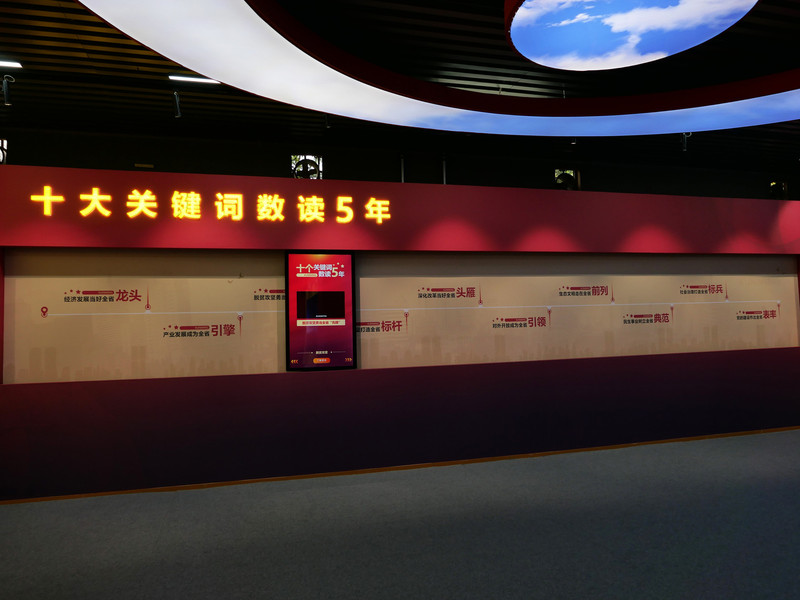





Dinosaur vertebra, tail vertebra

Femur, fibula, tibia, claw bone


Fossils of dinosaur footprints, middle and late Jurassic




The Flying Tigers Memorial Hall is a feature of Kunming. The museum displays more than 200 collections selected from more than 2000 cultural relics donated by Chinese-American Chen Canpei and his wife, including daily necessities of the American Volunteer Corps to China, the U.S. Air Force Task Force in China, and the 14th Air Force at that time. Rescue supplies, political, economic, and military historical documents, photos, books, badges, etc. during World War II.

Kunming has a profound historical connection with the "Flying Tigers". The "Flying Tigers" were born, fought and grew up here. The first time they took off and fought in Kunming, and the first time they shot down enemy aircraft was also in Kunming. The team members used blood and life to build an air barrier, effectively curbing the indiscriminate bombing of Japanese aircraft, combating the arrogance of the invaders, and writing a rich mark in the history of the War of Resistance.


The Flying Tigers were established in August 1941 and were officially named the American Volunteer Aviation Team of the Chinese Air Force. The founder was American flight instructor Claire Lee Chennault.

The three squadrons 'logos: Adam Eve, Panda, Earth Angel

The US military uses flashlights and compass pins

Hump parachute survival bag, small first aid box with canvas bag, special map mirror, US Signal Squadron telescope

P40 fighter pilot manual, English and French military dictionary

"China's Local Guide", US military training manual "How to Survive in Despair", technical manual "Basic Communication Law"




Various badges, medals, medals



US military uniforms

China-US friendship envoy-Chen Xiangmei, female, her ancestral home in Foshan, Guangdong, was born in Beijing on June 23, 1925. In the early days, he worked in the Kunming branch of the Central News Agency and married Chennault in December 1947. In 1949, he evacuated the mainland with Chennault's civil aviation company and moved to Taipei. He moved to Washington, USA in 1960. In 1967, he was appointed by Nixon as chairman of the National Women's Committee for Nixon's Presidential Campaign. In 1980, he visited China as Reagan's Goodwill Ambassador to promote cross-Strait exchanges. Around New Year's Day in 1981, he visited Beijing as a special envoy of US President Reagan. He passed away on March 30, 2018.




Landscape fan

Flower fan


animal fan


Fruit and vegetable fan

text fan
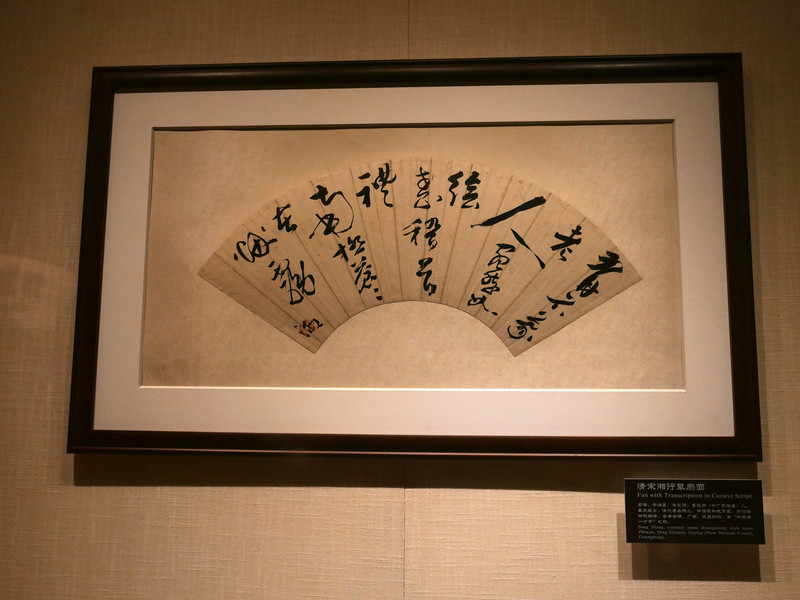
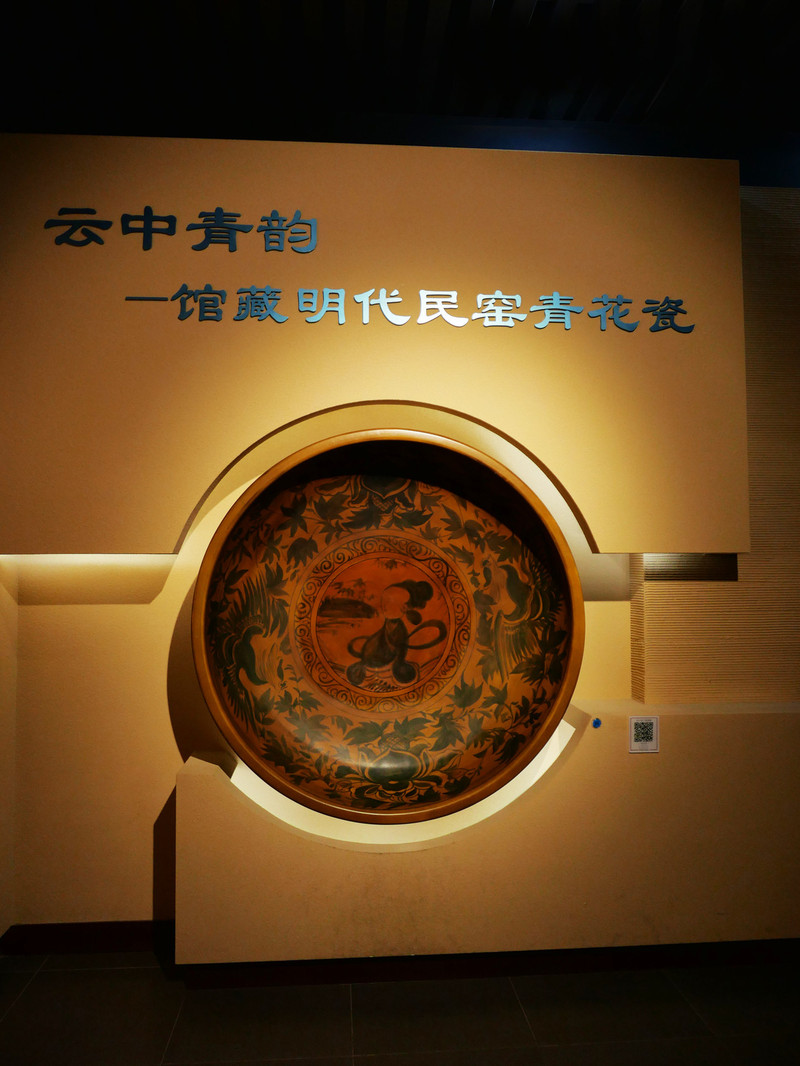
The blue and white porcelain exhibition hall displays the products of Jianshui Kilns and Yuxi Kilns from Yunnan local folk kilns, as well as the blue and white porcelain from Jingdezhen folk kilns brought with Juntun and Mintun. What is more unique is the cremation jar, which is regular in shape and gorgeous in decoration. During the Yuan and Ming Dynasties, influenced by ethnic customs and Buddhist culture, Yunnan produced a blue and white porcelain jar specially used for cremation. It was famous for its large yield and large survival in the world.


Flower pattern pot

Jade pot spring bottle with flower pattern. Jade pot spring vase is a typical shape in Chinese porcelain shapes, with beautiful and soft lines. The shape evolved from the water bottle in temples in the Tang Dynasty. It has a mouth, a thin neck, a hanging belly, and a rounded foot. It is generally like two symmetrical S-shaped combinations of left and right.

Character pattern jade pot spring bottle

Blue and white pot

Tingtai pine, bamboo, plum, broken branches and chrysanthemum pattern cremation jar

Cremation jar with twelve zodiac patterns

The gold list is titled with pattern bowls, geometric pattern bowls, and bowls made in the Xuande Year of the Ming Dynasty

Yutang Jiaqi bowl, pine, bamboo and plum pattern bowl


Dinner was held at the Yongan Road Store of "Laodian Shanzhai". The restaurant's signature features local dishes in Yunnan prefectures, as well as ethnic minority singing, toasting and other performances.


Stir fry beef, Naxi stewed chicken blood, cabbage and tofu soup, two dishes and one soup, 95 yuan.


There is a toast performance after the singing

The temperature is low, and charcoal is grown in the store

Some of the vendors roasting the fire outdoors were already wearing thick down jackets. Kunming is located on the Yunnan-Guizhou Plateau, with an average altitude of 1890 meters in the urban area. The temperature difference between day and night is large, and the body feels more obvious on rainy days.



The predecessor of the Yunnan Railway Museum was the "Yunnan Narrow Gauge Railway History Exhibition Hall" at Kaiyuan Railway Station. In 2003, it moved to Kunming North Railway Station and expanded it to form its current appearance.

The museum consists of the original waiting room of Kunming North Railway Station (South Hall), the newly built modern building (North Hall), and a steel bridge connecting the north and south museum areas. Under the bridge, the Sanchu railway line remains the former Kunhe Line, integrating the museum and the operating station.


Tickets for the visit are 10 yuan per person.

The exhibition hall has three floors, and the exhibition halls are distributed as follows: South Hall: preface hall on the first floor; Yunnan-Vietnam Railway Exhibition Area on the second floor; Railway Tunnel Exhibition Area and High-Speed Railway Exhibition Area on the third floor. North Pavilion: Railway Culture Exhibition Area and Rolling Stock Exhibition Area on the first floor (meter gauge, inch gauge, and gauge gauge); Yunnan High-speed Railway Development Exhibition Area, High-speed Railway Achievement Exhibition Area, China-Laos Kun-Wanzhou (Jade Mill) Railway Exhibition Area on the second floor; Yunnan-Vietnam Railway Exhibition Area on the third floor, Gebishi Railway Exhibition Area, Yunnan-Myanmar-Syria-Kunming Railway Exhibition Area, and Chengdu-Kunming Railway Exhibition Area.

Because the south and north halls, as well as the upper and lower floors, are all connected, it is easy to feel dizzy when visiting. If you don't pay attention, you will miss out on some exhibition halls. It is best to slowly look at them one by one in order. More famous exhibits include: The treasure of the town hall-the "Michelin" passenger rubber-tyred diesel EMU, the pocket steam locomotive-the inch gauge SN No. 29 steam locomotive, the inch gauge luggage postal car, wooden passenger car, iron box car, wooden gondola car, wooden flat car, wooden box car, wooden box car, the pioneer in China's railway high-speed train exploration-the Quasi-gauge Chuncheng EMU Chuncheng, the Quasi-gauge Dongfeng I diesel locomotive No. 2058, the meter-gauge KD55 steam locomotive, and the hand-operated gear transmission rail car, clamp-shaped universal watch, Moline level, Theodolite, railway engineering measuring instruments, etc.

As the starting point of the Yunnan-Vietnam Railway, Kunming is one of the few cities in China with international waiting stations. It is also the only city in the world that has three railway gauges: standard gauge, meter gauge and inch gauge. By the way, the gauge of the standard gauge is 1435 mm; the meter gauge is 1000 mm and greater than 1000 mm and less than 1435 mm; the inch gauge is a narrow gauge, and the gauge is less than 1000 mm, such as the 600 mm gauge.

The Yunnan-Vietnam Railway is the historical pioneer and cultural source of Yunnan Railway. This is the first railway in Southwest China. It starts at Kunming North Station and ends at Haiphong Station in Vietnam. It runs north-south and has a total length of 859 kilometers (465 kilometers in the Yunnan section and 394 kilometers in the Yue section).

The railway is a meter-gauge railway, designed and constructed by the French. Construction of the Yue section began in 1901 and was completed and opened to traffic in 1903; the Yunnan section started in 1904 and was opened to traffic in April 1910.

The Yunnan-Vietnam Railway project is very arduous. The height difference between the north and south lines is 1940 meters, with curves accounting for 53%. The minimum curve radius is 80 meters and the maximum slope is 30‰. There are 22 iron bridges of 997.15 meters, 108 stone bridges of 3118 meters, and 158 tunnels of 17864 meters.

Railway Engineering Measuring Instrument (1901, made in France)
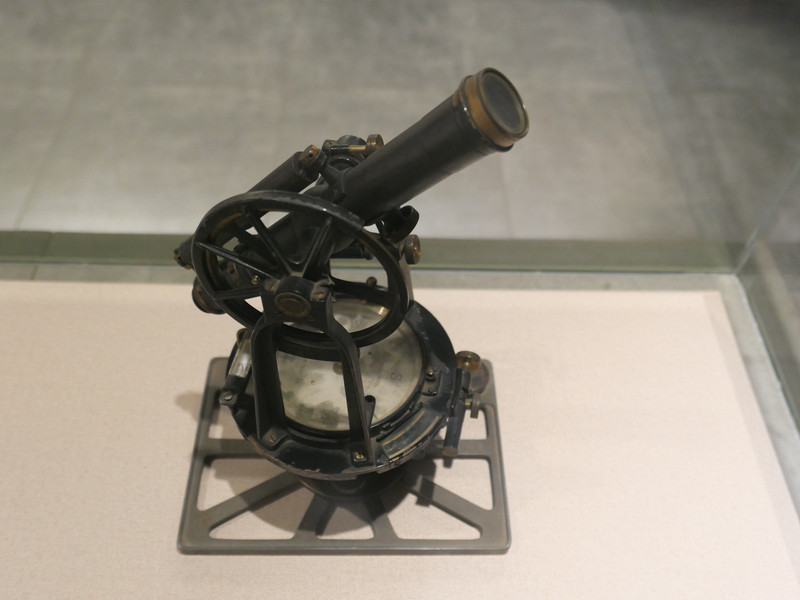
Theodolite (19th century, American)

Morin Level, Bodilemy 400-degree Theodolite (1901, made in France)

Foot stand and ruler for measuring instruments (1901, made in France)

Mauser (19th century, made in Germany)

A group photo of French accountant Georges August Malpot's family on the Yunnan-Vietnam Railway 100 years ago. In the lower right corner of the picture above is a Derogy brand leather cavity camera made in Paris, France in 1895.

The "Erricidal Bridge" showcasing the latest scientific and technological achievements of railway construction at that time. The entire bridge is composed of more than 20,000 short and light steel rods. It looks like a steel giant with unfurled limbs. It flies on a cliff more than 100 meters long and has been in operation so far. In 2006, it was identified as a national "cultural relic protection unit".

Baizhai Bridge

"Dian-Vietnam Railway" Volume 1 and Volume 2 (published in France in 1910)

Hand-operated gear-driven rail car (19th century, made in France)

In April 1910, the Yunnan-Vietnam Railway was completed and put into operation, and a grand completion ceremony was held. Gerden, director and general manager of the French Concession Company, Li Jingxi, Governor of Yunnan and Guizhou of the Qing Government, and Bourjeva, Consul of the French Ministry of Foreign Affairs, attended the ceremony and delivered speeches.

Hardwood crowbar (1910, made in Vietnam)

Lantern, lighting lamp (19th century, made in the UK)

Signal Light (1955)

Wood track ruler, iron track ruler (1910, made in France)

Triangle track ruler (1910, made in France)

American typewriter, German hand-operated mechanical calculator
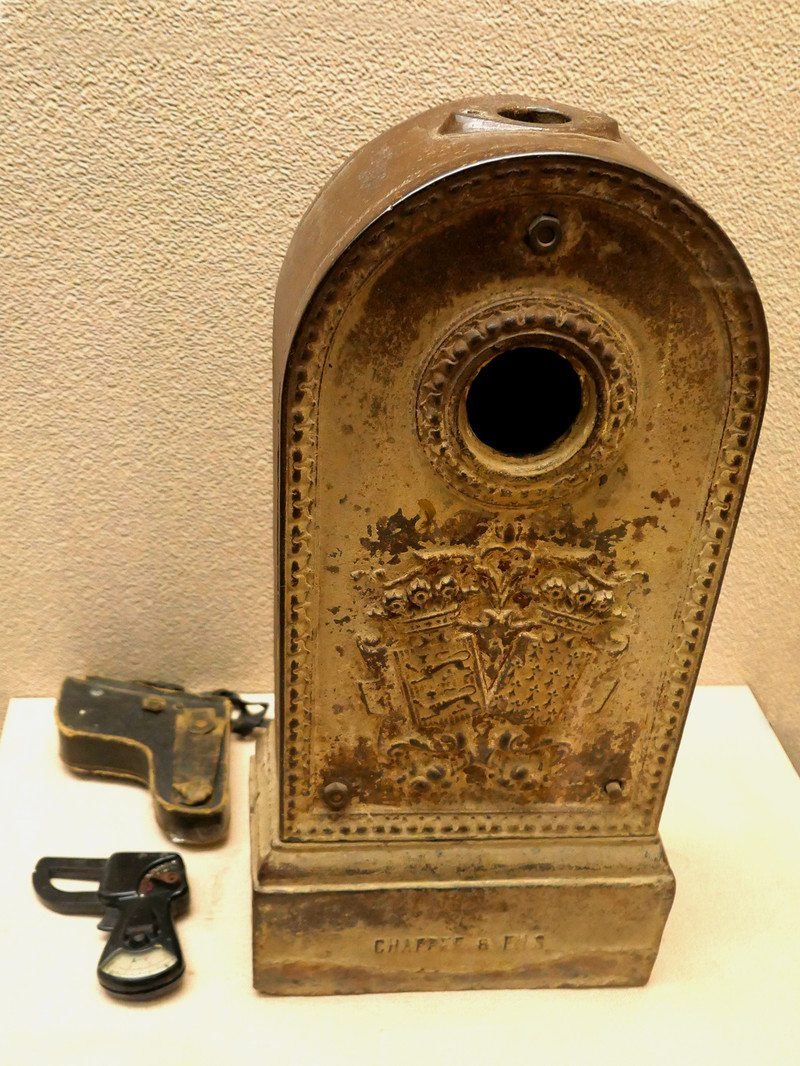
Clamp universal watch, faucet box (made in France)

signal lamp

Su (Union) Road Sign Machine (1967)

Double screw pick (bidirectional screw jack. 1930, made in France)

Coupler buffer device (1910, made in France)

Appointment Letter for Director of the Third Branch Bureau of the Dian-Vietnam Railway (1928)

line card

Dongfeng steam locomotive nameplate (1958)
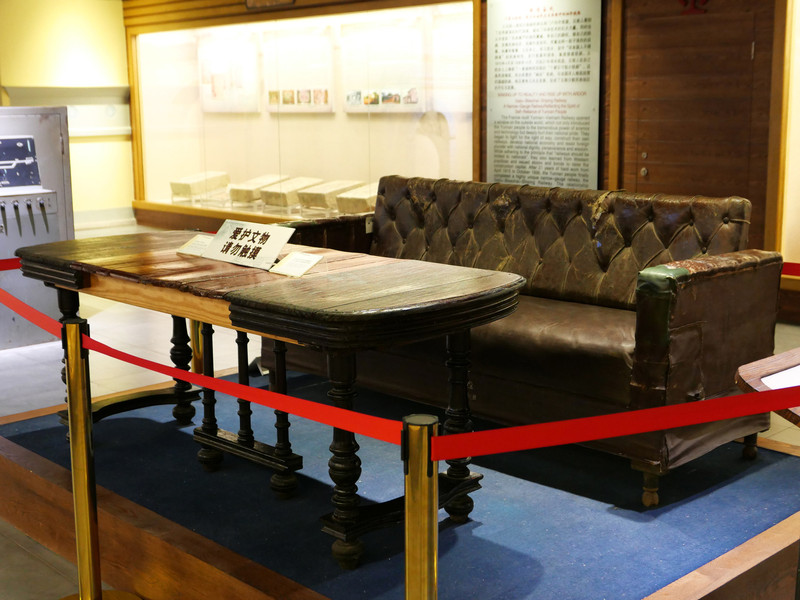
The sofa and table used in official vehicle No. 601 when President Liu Shaoqi visited Vietnam in the 1960s

The Bishi Railway is a pocket railway that demonstrates the spirit of self-improvement among Yunnan people. Connecting Gejiu, Bisazhai, Shiping and other places, it is the only inch gauge railway in the country with a gauge of 600 mm. In the form of segmented construction, the Gebi section started in 1915 and opened to traffic in November 1921; the Jijie Street Lin (Jianshui) section started in 1918 and opened to traffic in October 1928; the Linping section started in 1929 and opened to traffic in October 1936, so far the entire road has been completed and put into operation. Passenger transportation was stopped in 2003 and freight transportation was stopped in January 2010.

Stone carving at the gate of "Gebi Linping Railway Company"(1926)

Gebishi Railway Check-in Baggage Tag

Key Road Sign (1945)

Rail (19th century, German)

Compiled the report of the Gobi Railway Company Committee. In 1933, the Yunnan Province government organized a collation committee to redraft the draft company's articles of association on the grounds of poor handling of Gebishi Railway Company.

The Yunnan-Myanmar and Syrian-Kunming railways were built and suspended due to the war. The Yunnan-Myanmar Railway was started by the National Government in December 1938, starting from Kunming North Railway Station. In 1942, it was suspended due to the fall of western Yunnan. The actual track was laid from Kunming to Anning (later demolished), but failed to reach the destination Rashu, Myanmar.

Survey Report on the Yunnan-Myanmar Railway (1939)

The Chengdu-Kunming Railway exhibition area reflects the historical appearance and ups and downs of various stages such as project decision-making, survey and design, construction and construction, traffic opening and operation, and capacity expansion and reconstruction with pictures, materials and objects.

The Chengdu-Kunming Railway starts from Chengdu Station in the north and ends at Kunming Station in the south, with a total length of 1096 kilometers. It was built in 1958. From 1959 to 1969, due to harsh geographical environment, backward production conditions, and turbulent social situation, the entire line was completed and put into operation on July 1, 1970.


The Chengdu-Kunming Railway has diverse terrains and complex geology. It is known as the "open-air geological museum" and is called a "railway forbidden zone" by foreign experts.

This extremely difficult railway line was built almost with flesh and blood. The number of casualties among railway soldiers, militiamen, etc. during the construction period cannot be determined. The Ministry of Military Affairs alone counted more than 2100 railway soldiers who died.

Kilometre piles along the railway



A photocopy of the "Salute to Electricity" celebrating the opening of the entire Chengdu-Kunming Railway. The 1960s and 1970s, those unforgettable red years, that kind of great dedication.

The completion and opening of the Chengdu-Kunming Railway has created a miracle on earth. On December 8, 1984, the project, together with the US Apollo spacecraft landing on the moon and the Soviet Union's first artificial satellite, was rated by the United Nations as "the three miracles symbolizing mankind's conquest of nature in the 20th century." On the same day, the Chinese government presented to the United Nations an ivory carving of the Chengdu-Kunming Railway.

The China-Laos Kun-Bandung Railway Exhibition Area shows the fighting history of the Kunming, China to Vientiane Railway in Laos. This international corridor has a total length of more than 1000 kilometers. After it is opened for operation in December 2021, Kunming and Vientiane will be accessible on the same day.



Railway Culture Exhibition Area

Locomotive and Rolling Stock Exhibition Area



Inch gauge SN No. 29 steam locomotive, first-class cultural relic. Made in the United States in 1923.



The inch gauge "Michelin" passenger rubber-wheel diesel EMU is a first-class cultural relic and a treasure of the town hall. Made in France. It is 19.7 meters long, 2.6 meters wide, and has a weight of 6 tons. It consists of two parts: the main car and the luggage trailer. It was used on the Yunnan-Vietnam Railway in 1914. In 1932, the French Michelin company replaced the car with rubber tires, making it a "Michelin car" operated on the railway.

There are 19 soft seats and 24 hard seats in the car. It is equipped with kitchen, washing and other facilities. It is a speed of 100 kilometers per hour. It is an advanced high-end official vehicle at that time.

The train is equipped with rubber tires, which greatly improves riding comfort. The tire can be automatically inflated, and a barometer on the rotating shaft of the train is connected to the bridge. When the tire pressure drops to 500 Pa, a warning will be sounded and the air system will automatically inflate. When the automatic inflation system fails, it can be inflated manually. This bullet train was in use until 1984, when it was scrapped due to aging equipment and missing parts.

The picture above shows the inside of the car at that time and is not open to the public now. The picture comes from the Internet.


The quasi-gauge Chuncheng EMU is a pioneer in exploring high-speed railway trains in China. It was jointly developed by the Kunming Railway Bureau, Changchun Passenger Car Factory and Zhuzhou Electric Locomotive Research Institute. It was opened between Kunming and Shilin during the 1999 Kunming World Horticultural Exposition.

The standard gauge Dongfeng I diesel locomotive No. 2058 was manufactured by Qishuyan Locomotive Factory in 1973.

The standard gauge Dongfeng II diesel locomotive No. 3279 was manufactured by Qishuyan Locomotive Factory in 1969.

The No. 0388 steam locomotive of the quasi-gauge upstream type was manufactured by Tangshan Locomotive Factory in 1971.

The meter-gauge KD55 steam locomotive was manufactured by Kawasaki Shipyard in Japan in 1897. 1958-1985 Railway operation in Yunnan in 1999.


Meter-gauge Dongfanghong 21 diesel locomotive, No. 001, was manufactured in Qingdao in 1978.


Meter-gauge wooden passenger car, second-class cultural relic. Made in France in 1940 and discontinued in 1985, it can carry 52 passengers.

Inch-gauge postal luggage cart, first-class cultural relic. Manufactured in 1919 at the Yangtze Factory in Hankou.
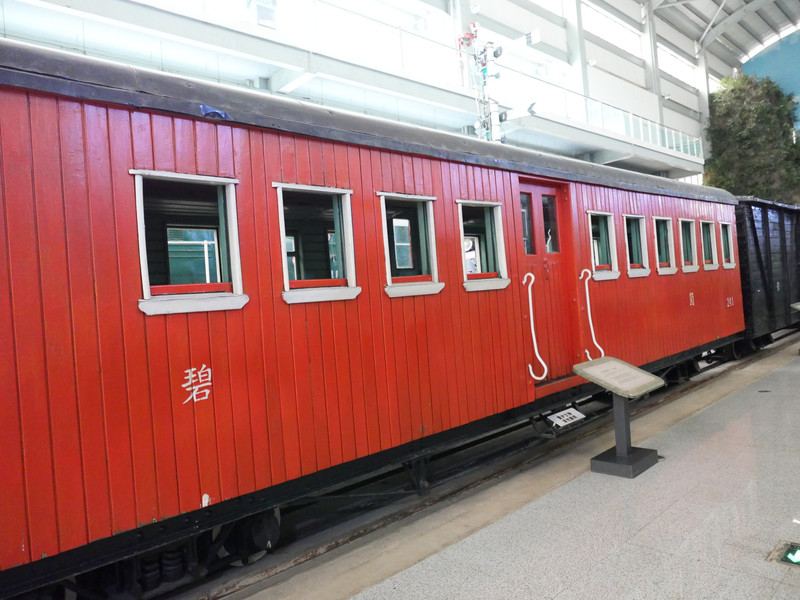
Inch-gauge wooden passenger car, a first-class cultural relic. Manufactured in 1919 at the Yangtze Factory in Hankou.

A 10-ton wooden boxcar with inch gauge, a first-class cultural relic. Made in France in 1925.

A 10-ton iron boxcar with inch gauge, a first-class cultural relic. Made in the United States in 1930.

A 10-ton wooden gondola car with inch gauge, a first-class cultural relic. Made in the United States in 1924.

A 10-ton wooden flat car with an inch gauge, a first-class cultural relic. Manufactured in 1919 at the Yangtze Factory in Hankou.


Kunming North Railway Station in normal operation




Yunnan Museum of Nationalities is located in Kunming Dianchi National Tourist Resort. It is a national-level museum and the largest ethnic museum in Southeast Asia. The basic displays include ethnic costumes and making crafts, ethnic characters and ancient books, ethnic musical instruments, ethnic folk masks, ethnic arts and crafts, folk tiles, ethnic folk ceramics, etc.

The museum has a courtyard corridor layout, and the main building has two floors. There are two exhibition halls on the first floor: ethnic costumes and production craftsmanship, and ethnic characters and ancient books. On the second floor, there are exhibition halls such as ethnic and folk ceramics, ethnic and folk masks, folk tiles, ethnic arts and crafts, and ethnic musical instruments. A word of warning, because it is a clover-type building, you must visit it in a certain order, otherwise you may miss it. This time, I missed the exhibition hall of ancient books in ethnic languages on the first floor. When I returned and looked back, it was almost off-duty time, so I could only take a quick glance and leave regret.

The "Chinese Nation Together Build the Chinese Dream" is decorated with a silver carved screen in the hall. The original is collected in the Palace of Ethnic Culture (Beijing).

The exhibition hall of ethnic costumes and production crafts displays 310 sets (pieces) of cultural relics of 26 ethnic costumes in Yunnan. There is also a professional clothing museum in China, the National Costume Museum of Beijing Institute of Fashion Technology, which collects more than 10,000 pieces of clothing, jewelry and fabrics from various ethnic groups.

Clothing is a precious material for exploring deep-seated culture such as human origin, national history, religious beliefs, marriage and family, and social roles. The national costumes created and passed down by the 26 ethnic groups that have lived in Yunnan for generations are of diverse materials, rich shapes, colorful colors, and superb craftsmanship. They embody weaving levels and aesthetic concepts, and carry a profound traditional culture and national spirit.


The content of the exhibition hall is divided into two parts: traditional clothing and clothing making technology. The "Traditional Clothing" section has three units: "Early Clothing","Daily Clothing and Dresses" and "Religious Sacrifice Clothing". Based on the development history of clothing as the main line, it displays ethnic costumes with different materials, styles, crafts, and cultural connotations in different periods., expressing the unique aesthetic appeal and superb wisdom of women of all ethnic groups in Yunnan. The "Clothing Making Technology" section has three units: "Weaving and Textile","Printing and Dyeing and Embroidery" and "Jewelry and Processing". "Weaving and Weaving" uses clothing fabrics such as Dai brocade and Zhuang brocade and clothing material processing machines such as spinning wheels, spinning wheels, waist looms, and horizontal looms to reveal the process of making national costumes. "Printing and dyeing and embroidery" displays the Bai tie-dyeing and Miao batik processes. Embroidery mainly displays plain embroidery, color embroidery, cross-stitch embroidery, braid embroidery, knot embroidery, cushion embroidery, tendon embroidery, pasting embroidery, and lockstitch embroidery. "Jewelry and Processing" demonstrates the pursuit of a better life by people of all ethnic groups through clothing accessories and production tools.

Lisu tribe bark arrow bag

Dai tree leather coat

Yi sheepskin jacket, Hui suede jacket

Dulong hemp woven men's clothing

Bai people's linen woven shells decorated with women's costumes

Tibetan costumes

Naxi wool woven women's clothes

Miao women's clothing

Zhuang women's costumes

Lahu women's clothing

Hani women's clothing

Han nationality flat embroidery costumes

Yi women's clothing. The Chuxiong Prefecture Museum in the back also exhibits a variety of Yi costumes.

It is colorful and dazzling. If you are interested, you can experience it personally.


Miao batik

Naxi Dongba batik

Zhuang people are full of gold and jade, seed-beating embroidery, happy eyebrows and flat embroidery


Dai spinning machine

Buyi and Yi nationality spinning machines

The exhibition hall of ancient books in ethnic characters is divided into three parts: "Original Notes","Ancient National Books" and "Work Achievements". The "Original Notes" section has three units: "Recording of Wood and Rope","Rumors of Objects" and "Recording of Picture Symbols", which show the original information transmission methods created by humans before the invention of words. The "Ethnic Ancient Books" section has three units: "Inscriptions on Gold and Stone","Ethnic Literature Ancient Books" and "Ethnic Oral Ancient Books", which display ancient books of ethnic characters recorded in different forms such as inscriptions, cliffs, inscriptions, seals, ancient written books, and oral myths and legends. The "Work Achievements" section shows the achievements, opportunities and challenges faced in the work of ethnic ancient books.



Tie a rope and record

Physical letters from the Jingpo people. The top winter grass, needle and thread, tree roots and sesame seeds indicate that they haven't seen their parents and relatives for a long time and miss them very much.


The national musical instrument exhibition hall is divided into five parts: "wind instruments","stringed instruments","plucked instruments","percussion instruments" and "folk instrumental music types". "Wind instruments" include "single reed","double reed","sheng reed","horn" and other contents. They introduce ethnic instruments of different shapes, such as Dai gourd silk, Yi "Bawu", Miao lusheng, Nu bamboo horn and other typical musical instruments. The "String Instrument" displays representative musical instruments such as the Dai bamboo tube erhu, the Zhuang horse bone erhu, and the Lisu "Jizhi". "Plucked String Instrument" displays typical musical instruments such as Hani horse-leg piano, Yi moon piano and sanxian. "Percussion Instruments" display representative musical instruments such as the Yao Hundred Wedge Flat Drum, the Dai Elephant Foot Drum, and the Zhuang Fish Drum. "Folk Instrumental Music Variety" introduces Dongjing music and Lama Temple Band instruments.

Wind instruments

Han nationality's twelve zodiac animals blow chicken

Miao Taiping Xiao

Single reed for wind instruments. Single-reed musical instruments are collectively referred to as Bawu in southern Yunnan Chinese. They are divided into bamboo and copper springs, and are divided into horizontal and straight.

Dai gourd flute

Yi Goose Bone Double Barwu

Nu Zhuhao

Jingpo Bronze Spring Bawu "Bi Zong"

Bambusa bulang

Tibetan six-foot. Such a large size, how can I operate it when playing?

Tibetan Longtou, Yi Tongmeng, Yi Da, Yi Mu


Playing a stringed instrument

Wa Duxianhu

Zhuang Horse Bone Hu

Han nationality gourd hu

Pipa of plucked string instruments

Dai Peacock Qin, Lisu "Qiben"

Nu "Dabiya", Yi Yueqin, Yi Longtou Yueqin, Mongolian Yueqin

Jino drum (sun drum)

Hani tape drum

Zhuang Hundred Wedge Drum

Zhuang Yugu

Wa wooden drums

Dai Elephant Foot Drum

Percussion instruments cymbals

Dai people's platoon
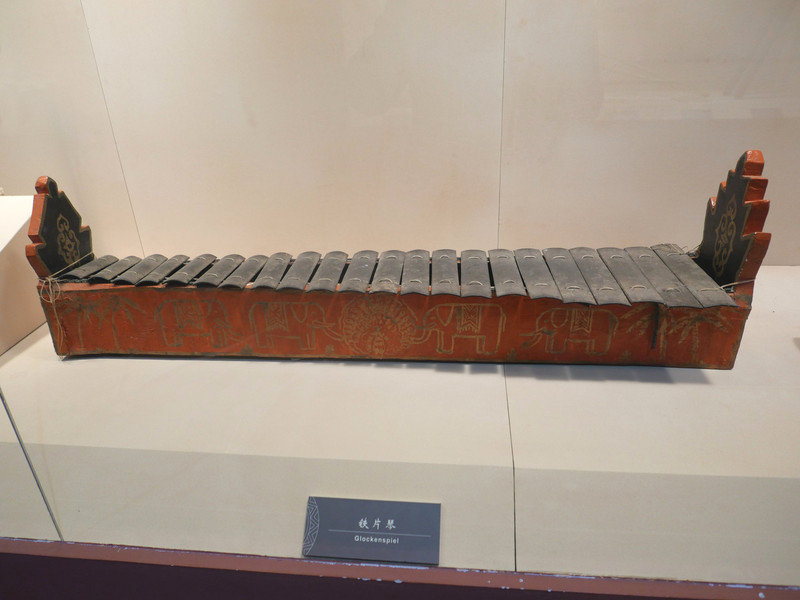
iron piano

Dongjing musical instruments

Dongjing music was originally a kind of Taoist ceremonial music, named after the main content of chanting the scriptures of the "Da Dong Xian Jing". It integrates blowing, pulling, playing, singing, chanting, Dharma, singing, praying, and offering sacrifices. The tunes are very rich, the melody is elegant and beautiful, and the rhyme is natural and smooth. It is called "elegant music" and "fairy music".



The special exhibition "Yunnan Practice on the Correct Path to Solving Ethnic Issues with Chinese Characteristics" is divided into five parts: the cordial care of the leaders, the glorious history of Yunnan's ethnic work, vivid practice, experience inspiration, and writing a new chapter. It comprehensively and comprehensively demonstrates Yunnan's ethnic work. 70 years of experience and achievements.

Yunnan is the epitome of the multi-ethnic family of the motherland. In accordance with the guiding ideology of "In Yunnan, it is not enough to plan for the overall situation without seeking ethnic work" and "all ethnic groups are one family, and all families must live a good life", the Provincial Party Committee and the Provincial Government have further promoted the construction of the demonstration zone for ethnic unity and progress. Adhere to the correct path of solving ethnic issues with Chinese characteristics has made useful explorations and vivid practices.


land license

Hua Yongning Border Region's Yi Affairs Command Seal is made of wood, 8.2 cm long, 5.8 cm wide, and 2.9 cm high. It is written in Yangwen and seal characters. The seal reflects the history of strengthening revolutionary leadership, resolving reactionary armed forces, and establishing political power in Liangshan Yi areas such as Huaping County, Yongsheng County, and Ninglang during the War of Liberation in August 1949.

"Development is the general key to solving various problems in ethnic areas"


The ethnic and folk pottery exhibition hall is divided into five parts: "Tibetan black pottery","Dai red pottery","Huaning glazed pottery","Jianshui purple pottery" and "Zhenzhai auspicious beast". There are also Xishuangbanna Dai slow-wheel pottery and Diqing Tibetan black pottery firing, Jianshui purple pottery firing and other national "intangible cultural heritage" skills. All 105 exhibits come from villages of all ethnic groups in Yunnan.


Tibetan black pottery

Tibetan porcelain inlaid unicorn brazier

Dai red pottery

Large oil lamp, lifting beam earthen pot

Huaning Yutao

Jianshui Zitao
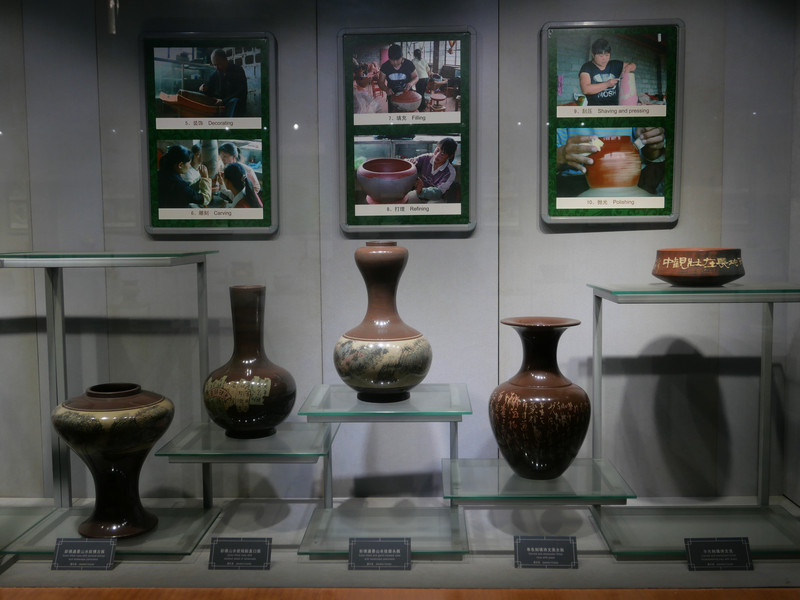
pottery-making skills

Zhenzhai auspicious beast

Dai red pottery elephant

The exhibition hall of ethnic and folk masks is divided into five parts: "God Jumping Mask","Life Ritual Mask","Festival Sacrifice Mask","Drama Mask" and "Town House Mask". The "God Jumping Mask" displays the masks used in religious activities to pray for blessings and eliminate disasters. "Life Ritual Mask" displays masks used in major life rituals such as coming-of-age ceremonies, weddings, and funerals. The "Festival Sacrifice Mask" displays masks used in festival sacrificial activities such as worshipping gods and ancestors, praying for a bumper agricultural harvest, and population reproduction. "Drama Mask" displays local drama and national drama masks. "Town House Mask" displays the mask of town house protection and evil and disaster avoidance.


The Yao people's "Dujie" mask is a mask worn during the men's adult ritual "Dujie".


The folk tile dang exhibition hall consists of four aspects."Animal pattern tile dang" has auspicious animal decorations such as dragons, phoenixes, cranes, and bats, as well as twelve zodiac signs;"Plant pattern tile dang" has chrysanthemums, lotus flowers, plum blossoms, peony, hibiscus, Ganoderma lucidum, etc.;"Character tile dang" has one-word tile dang, two-word tile dang and four-word tile dang, and auspicious characters such as "Fu" and "Shou" are common;"Other decorative tile dang" has traditional auspicious patterns, pavilions and pavilions and Taiji Eight Trigrams patterns.




Bagua Wen, Tai Chi Wen Wadang

Double flag pattern tiles, happy eyebrows pattern tiles


The National Arts and Crafts Exhibition Hall is divided into four parts: folk painting, cutting and carving technology, sculpture technology, and metal technology. "Folk painting" includes scroll paintings, cloth paintings, paper symbol paintings, wooden sign paintings, woodcut woodcuts and other contents. "Cutting and carving craftsmanship" includes shadow puppets and paper-cutting. "Sculpture craftsmanship" includes wood carving, stone carving, jade carving, metal carving, pottery sculpture and other aspects. "Sculpture Art" displays the emotions and wisdom of various ethnic groups. "Metal Crafts" include tinware, silverware, spotted copper, black copper and silver and other exhibits that embody Yunnan's reputation as a "non-ferrous metal kingdom".

Painting of "Mogong" by the Zhuang nationality. In Zhuang areas, Mo religious clergy are called "Bumo" and "Mo Gong".

Painting of the Yao people's "Daogong". Dao Gong is a Taoist clergy.

Tibetan Thangka is a scroll painting mounted with colored satin and then hung for worship.

Buddha Banner

Naxi Dongba card painting
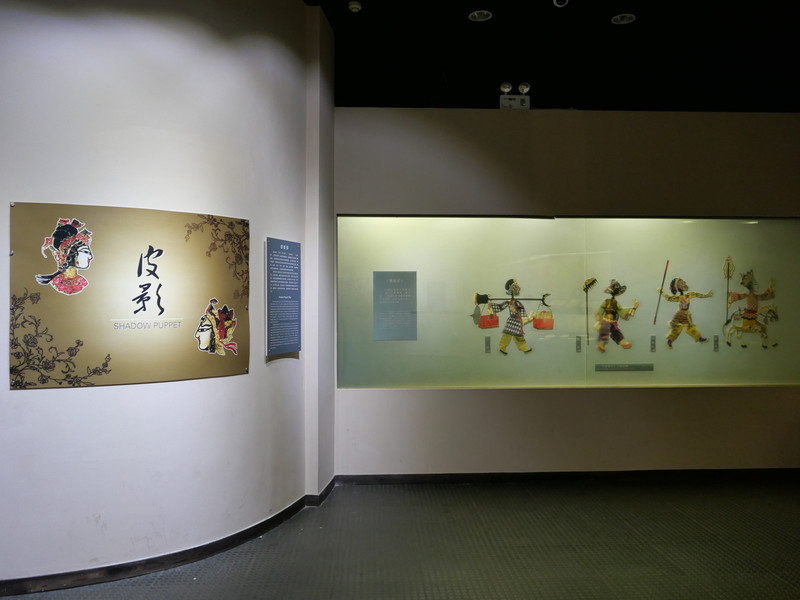
shadow

paper-cut


Dai Asuo. A witchcraft token belonging to Dai men. It is said that carrying Aso when in love will make the woman he likes fall in love with him.

Jiama is an item used by people to sacrifice to gods such as the God of Wealth, Moon Goddess, Kitchen God, and Longevity Star.

Spotted vase

Copper spotted peacock. Spotted copper is a unique traditional handicraft in Yunnan. After being cast, polished and processed by a series of complex processes, the surface of the brown-red copper presents bizarre flashing and gorgeous mottled spotted flowers.
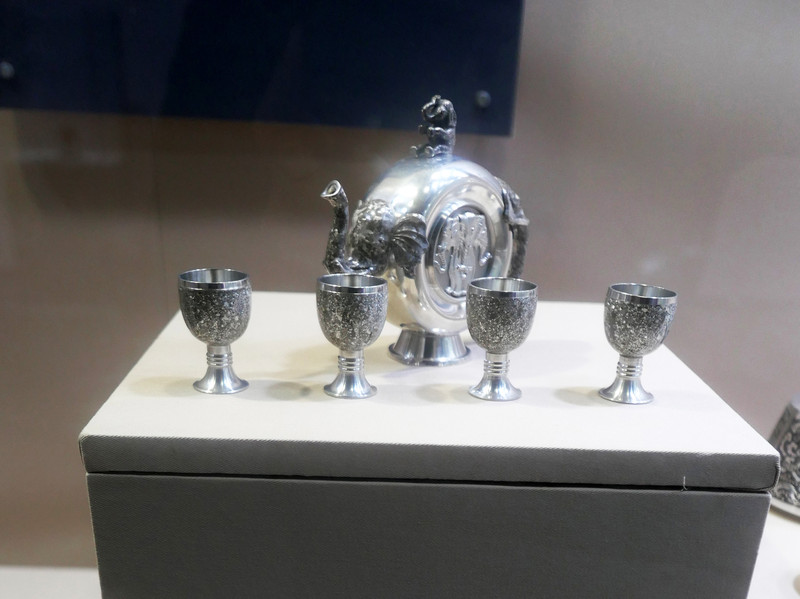
Banxi wine utensils
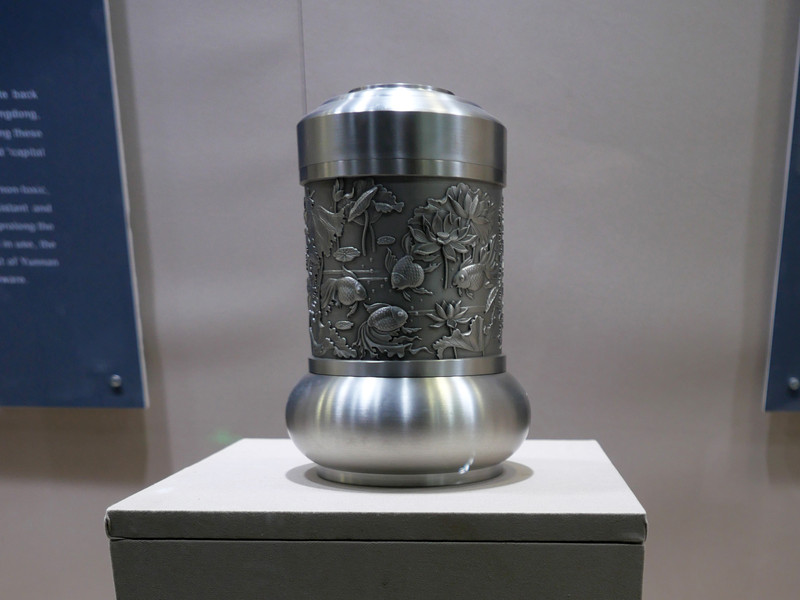
"There is more than every year" tin tea jar

Black copper walking silver hookah bags, ink cartridges. Black copper and silver are a unique traditional copper process in Yunnan. First, various pattern patterns are carved on the copper body, then melted silver (or gold) water is filled into the pattern patterns, and then polished smoothly after cooling. After a period of time, the black base copper has a silver (or gold) pattern, which is clear in black and white (or black and yellow), and has an antique color.

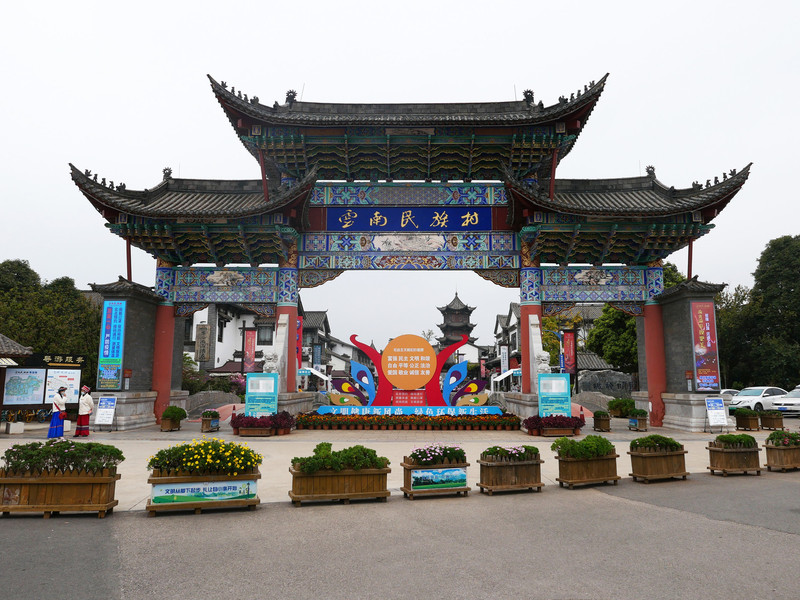
In the Yunnan Ethnic Village opposite the Yunnan Museum, many people complain that it is like a ethnic architectural park. The true ethnic cultural content is insufficient, so they check in at the door and do not visit it.



Dianchi Lake is China's largest plateau lake and the largest freshwater lake in Yunnan Province. It covers an area of 33,000 hectares, equivalent to 50 West Lakes in Hangzhou. In such a large area, where is it appropriate to watch? Most people walk from Haigeng Park along Hubin West Road, Wanghai Road, and Guanjing Road to Haigeng Dam to listen to the waves, stroll around, stare blankly, take photos, and watch red-billed gulls...




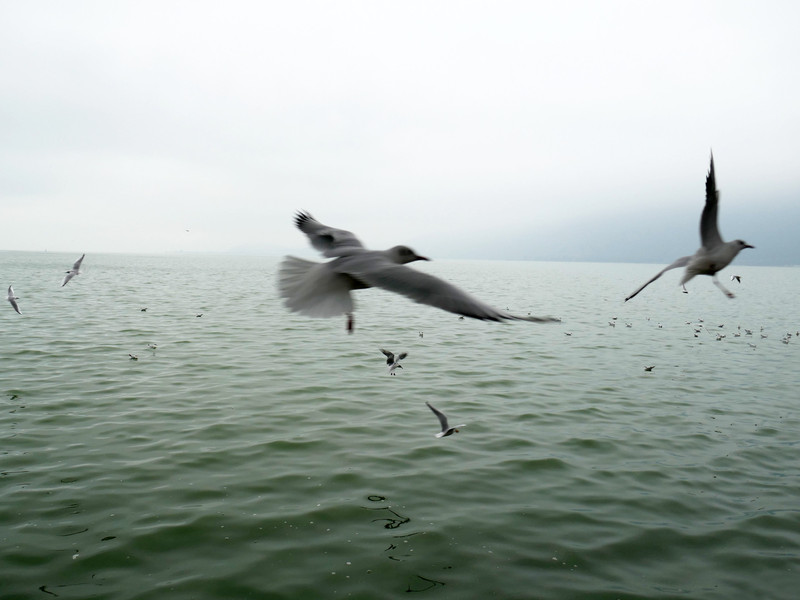
The red-billed gull, commonly known as the water pigeon, is similar in body shape and coat color to a dove. Its beak and feet are red, most of its feathers are white, and its tail feathers are black. Where fish, shrimp and insects are the main food, and people like warm places, change their living environment according to climate change and choose suitable habitats.





Since the autumn of 1985, tens of thousands of red-billed gulls have come to Kunming every year to feed and winter, forming a beautiful landscape. Therefore, Kunming has been named "Hometown of Red-billed Gulls in China."



Pollution control ship. Dianchi Lake is one of the earliest control projects launched in the history of pollution prevention and control in my country. It has spanned 25 years, but monitoring shows that the water quality is still mildly polluted. From what I saw this time, I also feel that the pollution control effect is limited. According to media reports, there are three main reasons: first, the lake water is in a relatively static state, does not form good water and water drainage channels, and its own purification ability is weak; second, the pollution interception is ineffective, and the problem lies in the water and the root lies on the shore; Third, the real estate "development around the lake" and "line development" are serious, competing with the lake for space and ecology.

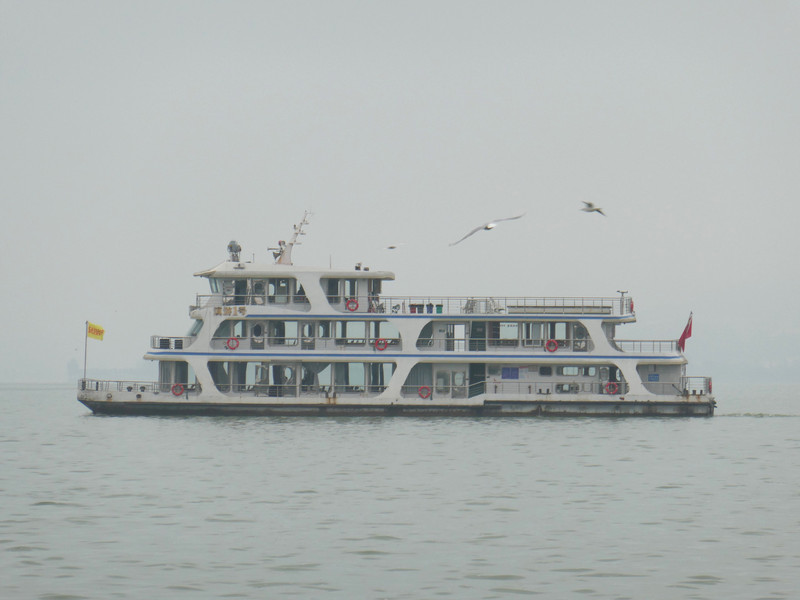
cruise ship





Young man, your head shines







Dinner is at Mengziyuan Crossing the Bridge Noodles Guomao Store. Mengzi is the birthplace of crossing the bridge rice noodles, which makes people feel more authentic. The side dishes include meat and vegetables, and the price is not expensive. The service was thoughtful and said to add meat dishes while the soup was hot so that it could be cooked well.


Traditional crossing the bridge rice noodles, 29 yuan; sauce skeleton, 15 yuan; scallion cake, 8 yuan. A total of 52 yuan.

It tastes very good, fresh, fragrant and slightly spicy, and you won't be thirsty after eating it.

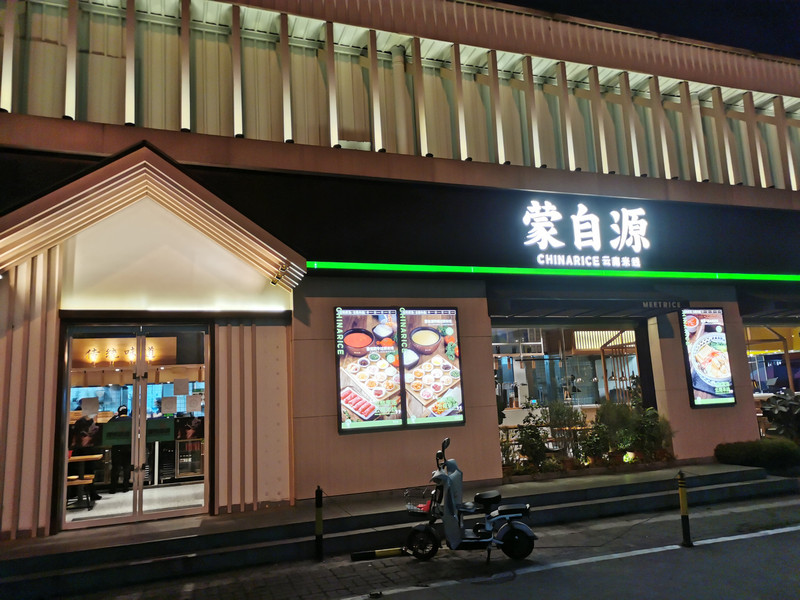


Chuxiong is not far from Kunming and takes an hour by train, so this time it was included in the itinerary mainly to come to the Chuxiong Prefecture Museum to see Lufeng dinosaur fossils, Yuanmou human fossils, Wanjiaba bronze drums and other collections.


There are many mountains, hills, basins and tunnels along the railway






The Chuxiong Yi Autonomous Prefecture Museum is located in Lucheng Town, Chuxiong City. It is far away from Chuxiong Station. There is a direct bus, but it takes 1 hour, and a taxi takes 25 minutes.

The museum is built against the mountains by using the height difference of slopes. The overall building has a unique charm. The Yi paintings are full of ethnic customs. It is not only a national second-level museum displaying cultural relics, but also a national 4A-level tourist attraction. More than 8000 cultural relics of various types are displayed in the museum, including unique fossils of ancient organisms, bronze cultural relics and Yi costumes.
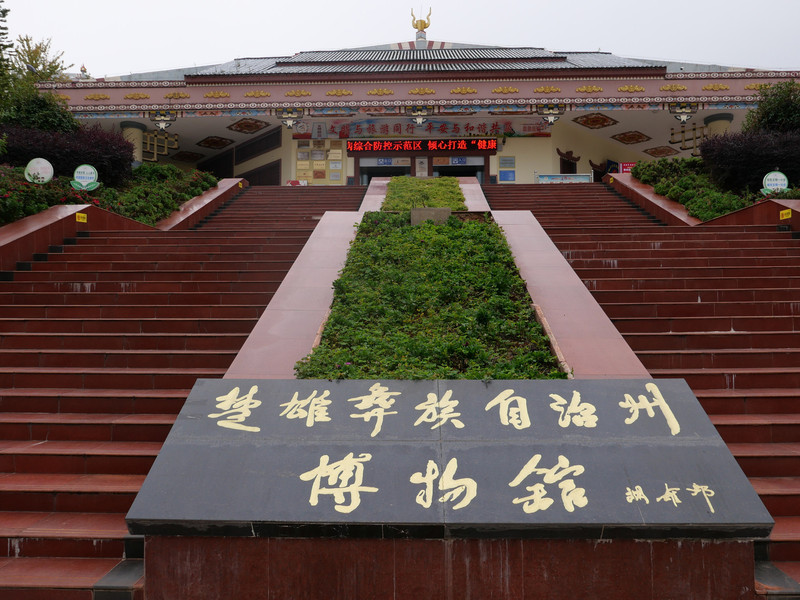
The name of the museum was inscribed by Hu Yaobang


It is not only a museum, a tourist attraction, but also a 4A-level scenic spot. It is rare to see it.

There are exhibition halls such as Animal Specimen Hall, Paleontology Hall, Historical and Cultural Relics Hall, Yi Hall, Luojiang Art Museum, Chuxiong History Exhibition Hall of the Communist Party of China, Film and Television Broadcasting Hall, etc. The exhibition halls are connected through corridors. When visiting, it takes about 3 hours to go up the corridor and visit it in order.


The Animal Specimen Hall, a popular science education venue for young people, displays more than 200 specimens of wild amphibians, reptiles, birds, mammals and fish animals.




The Paleontology Hall is divided into two floors. The downstairs is the "Dinosaur World", which displays dinosaur fossils and dinosaur science materials; the upstairs is the "Rich Paleontology", which displays various paleontological specimens.

Chuxiong is the first dinosaur hometown in China to discover dinosaurs and is famous around the world. It has the largest number of known dinosaur fossil sites in the world. Since Yang Zhongjian discovered dinosaur fossils in Lufeng County, Chuxiong in 1938, nearly 24 genera and more than 50 species of saurosaur fauna have been discovered in the state. The era is from the Triassic to Middle Jurassic in the Mesozoic Era, about 220 million to 140 million years ago.

Dinosaur cervical vertebra fossil

Dinosaur humerus fossils

Fossils of dinosaur intestines

Dinosaur pubis fossils, ischium fossils

Dinosaur femur fossil

Parrotrosaurus
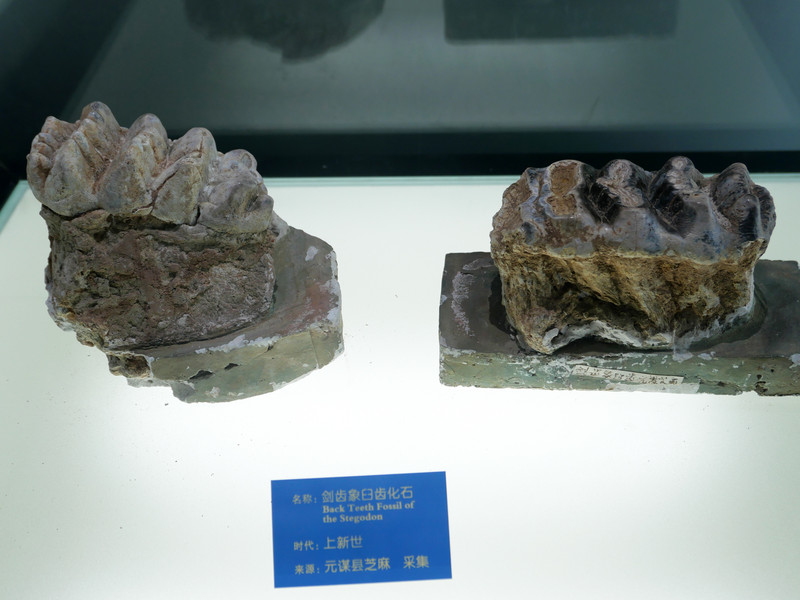
Fossil molar teeth of saber-toothed elephant

Fossil mandible of Saber-toothed Elephant

Yuanmou saber-toothed elephant


During epidemic prevention and control, staff regularly disinfect.

trilobite fossil

Sharp billed sturgeon fossils

The Historical and Cultural Relics Hall is divided into two floors: the "Paleolithic Age" and the "Neolithic Age" downstairs, and the "Bronze Age" and "Cultural Relics from the Eastern Han Dynasty to the Ming and Qing Dynasties" upstairs, showing Chuxiong as the "birthplace of mankind" and "The historical and cultural style of the hometown of copper drums".

The "Paleolithic Age" unit displays the earliest discovered cultural relics related to the Yuanmou people in my country and located in Yuanmou County, Chuxiong Prefecture, characterized by making stone tools and represented by hunting and gathering economic life. The "Neolithic Age" unit displays cultural relics represented by the Dadunzi Site in Yuanmou County and the Caiyuanzi Site in Yongren County. The "Bronze Age" unit displays representative bronzes unearthed from Chen Wanjiaba and Zhangjiatun cemeteries. The "Cultural Relics from the Eastern Han Dynasty to the Ming and Qing Dynasties" unit displays pottery figurines, bronzes, coins, bronze mirrors, cremation cans and other cultural relics unearthed from the Eastern Han Dynasty to the Ming and Qing Dynasties.


The phalanges and stilts of Lufeng Ancient Ape are about 8 million years old.

Yuanmou ape is about 4 million to 7 million years old. The word "Yuanmou" originates from the Dai language and means "horse".

Yuanmou ape skull

Yuanmou Man is the earliest Homo erectus in China, about 1.7 million years ago.

Yuanmou people's upper and inner incisors

Stone tools and bone utensils used by Yuanmou people


Pottery pot with a round-bottomed spiral pattern, Late Neolithic

Chick-shaped pottery pot, late Neolithic. Such cultural relics have also been seen in the Yunnan Province Museum.

Shizu reflects the reproductive worship of the primitive ancestors.

Copper bracelet, late Spring and Autumn Period

Copper Ge, Warring States to Han Dynasty

Copper axe and copper adze, from the Warring States to the Han Dynasty. Adze is a flat axe that smoothes wood. It is more difficult to use than an axe. There is a saying that "a hundred days axe, a thousand days adze".

Bronze arm armor, late Spring and Autumn Period

Chimes, Warring States Period

The Wanjiaba type copper drum was first discovered in the Wanjiaba tomb burial complex in the south of Chuxiong City in 1975. It is the oldest copper drum in the world. It dates from the Spring and Autumn Period around 690 BC.


The bronze drum was originally a copper cauldron used as a cooker. With the development of society, its function has also changed. It is not only a musical instrument for accompaniment of singing and dancing, but also a ritual vessel for sacrifices and celebrations. It is also used by slave owners as an important tool for gathering tribes. The so-called "drums are beating in the mountains and forests, and the barbarians gather together." Later, it gradually evolved into a ritual vessel that showed the aristocratic wealth and authority of slave owners. Because bronze drums can gather people and show social status, the whole society regards them as treasures.

The Wanjiaba type copper drum is characterized by a narrow drum surface, a particularly expanded drum chest, a short drum drum, a large foot diameter, and a small and slightly flat body. The walls are thick and the surface is rough. Some have no veins on the whole body, and some are decorated with childish and simple patterns.


wooden coffin


Ju Que inkstone is one of the famous inkstones in China. Stone is produced in the cliffs along the Jinsha River in the Panxi Rift Valley in southwest my country. This place was called "Juque" in ancient times, so it is called Juque inkstone. The stone is dense and delicate, as smooth as jade. It has strong toughness and elasticity, good polishing and polishing properties, and is known as the "treasure among inkstones".


Bronze mirror with the inscription "Long Life, Rich and Full of Gold and Jade"
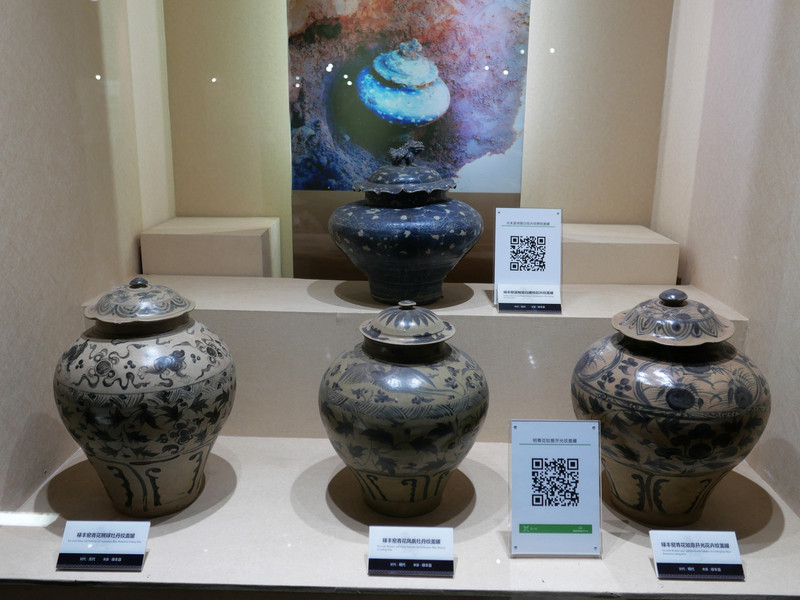
Cremation cans. Such an exhibition was also seen at the Kunming City Museum, a blue and white porcelain jar specially used for cremation.

Green glaze plastic lotus petal pattern cans, plastic lotus petal pattern tower-shaped lid cans

Blue and white figure pattern jar


The Yi Hall is one of the characteristics of the Chuxiong Prefecture Museum. It includes three parts: a historical and cultural exhibition, a Chinese Yi costumes exhibition, and a Yi Bimo culture exhibition.

The large Yi epic mural "Meige" in the middle of the exhibition hall is 3 meters high and 33 meters long. "Meige" is a long narrative epic by the Yi people, passed down by word of mouth through rap.

The murals are divided into six parts, namely, the creation of mountains and rivers (creation of creation), the creation of floods (creation of people), the creation of the Yi people, the marriage of the Yi people, the creation and inheritance of the Yi language, and the Yi festivals. Through exquisite patterns, bright colors, and distinctive styles, it demonstrates the spirit of the Yi people who are hardworking and brave, dare to create heaven, earth, and create all things, and expresses the Yi people's colorful folk customs and their ability to sing, dance, and hospitality. Good character.





The Yi people are the indigenous people in Chuxiong Prefecture. They developed into a "Yi people" as early as the Spring and Autumn and Warring States Period and established their own state power, the Dian State. Like people of all ethnic groups, over the long history, the Yi people have created splendid traditional culture and left behind a rich cultural heritage.

Yi script. The Yi people were one of the first ethnic groups in the world to invent and use writing. The ancestors invented the pictography of "writing shapes and shadows", which later evolved into hieroglyphs, and then evolved into ideographic Yi characters.

Yi Language History of Taizu

The Yi people's father-son joint name system, and the suffix of the father's name is the first word of the son's name.

Long sword, hunting knife

crossbow

Powder gun, powder keg

Painted leather shield
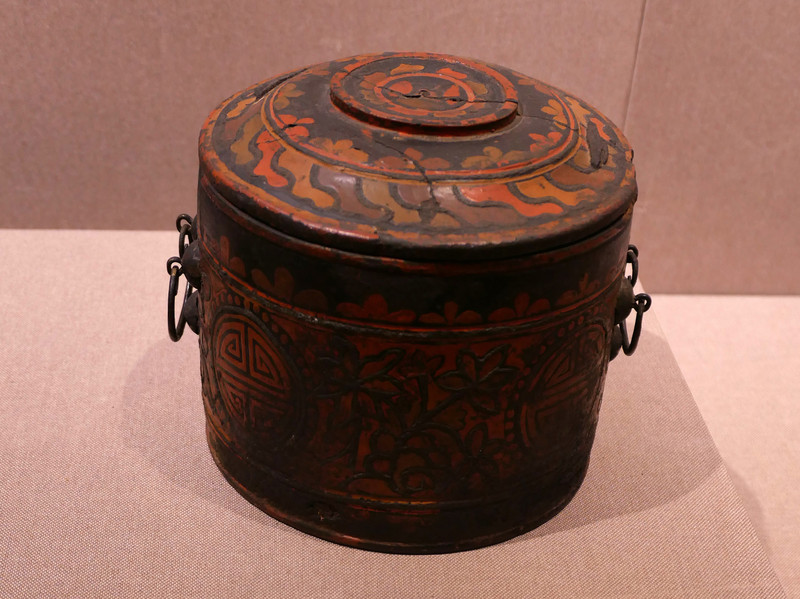
Painted wooden box
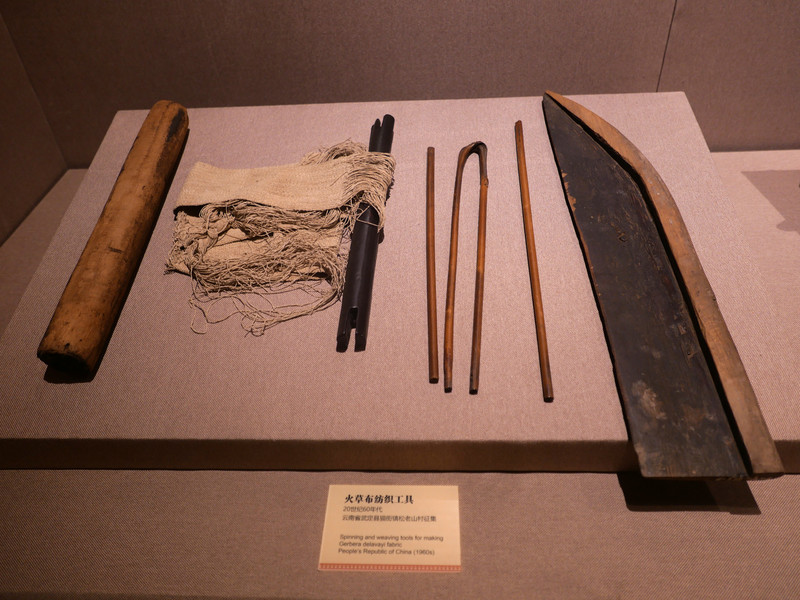
Firegrass cloth textile tool

Longtou Yueqin is similar to what you see in the Yunnan Museum of Nationalities

Sanxian
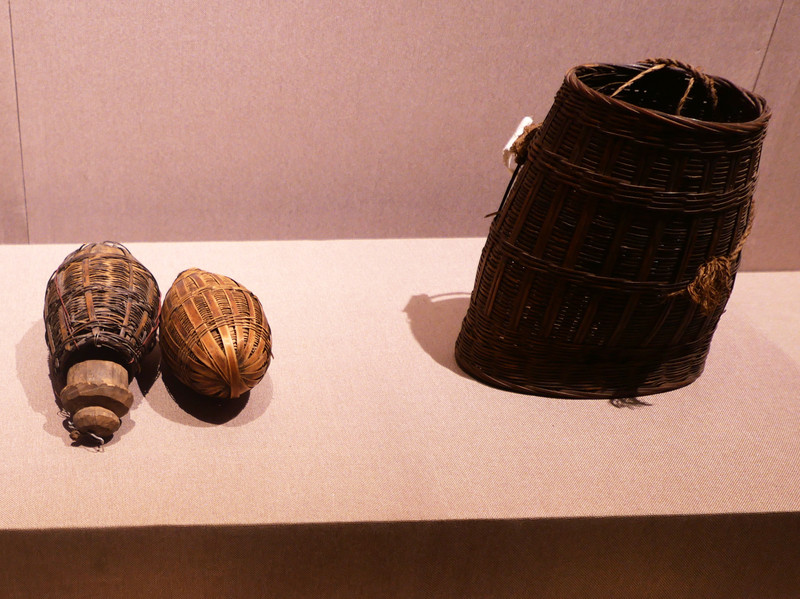
Grasshopper basket, seed bamboo basket

Yi costumes are colorful and unique, with nearly a hundred forms. Its texture, craftsmanship, and patterns vividly outline the historical process of the Yi people's development, and contain deep-seated cultural connotations such as the Yi people's unique aesthetic tastes, folk customs, religious beliefs, and marriage ethics.


Due to different languages, regions, branches, and ages, Yi costumes are roughly divided into six types: Chuxiong, Western Yunnan, Northeast Yunnan, Southeast Yunnan, Liangshan and Honghe. There are several styles under each category. In addition, there are special costumes with different uses such as weddings and funerals, wars, and sacrifices. The production processes include weaving, embroidery, inlay, printing and dyeing, etc. The decorative patterns on various parts of the clothing have strong contrasting colors and rich compositions. They are matched with various ornaments with rich texture, diverse shapes and exquisite craftsmanship, or are colorful or magnificent., creating a colorful and vivid picture.


Made of sheepskin, felt, linen, and fire grass, the original clothing that was traditionally hand-cut, sewn, and woven still remains today.

Huocao Men's Clothing

suede bag


bridal wear

Young men dressed up

Young women dressed up

Northeast Yunnan style, men's clothing is close to Han clothing, and women's gowns are inlaid with two to three patterns on the front and back of the hem.

Embroidery back batch, embroidered shawl

Southeast Yunnan type, mainly based on mosaic and batik techniques. Men's clothing consists of plaid headgear, short jacket, and green step pants; women's clothing uses dragon pattern and dragon claw flower as the main decorative patterns.

Western Yunnan style young women's costumes


Red River type, most of the clothing patterns are natural patterns, which are bright and eye-catching and highly decorative.

In the Liangshan type, men like to wrap their heads with blue cloth or blue cloth and tie a long conical knot on their forehead to express their heroic spirit. It is commonly called the "heroic knot". Unmarried women wear all kinds of head handkerchiefs. After childbirth, they wear hats or wrap head handkerchiefs. They are all black, and their ears are worn with gold, silver, coral, jade shells and other earrings.

Clothing craft

headdress

Embroidery bag

Carrying flowers and ribbons


silver jewelry



Bimo was a cleric in Yi society. "Bi" in Yi language means praying for praise and chanting scriptures during religious activities, and "Mo" means elders and teachers.

Yi society has five grades: "Zi (Tusi)","Mo (judge)","Bi (Bimo)","Ge (craftsman)" and "Zhuo (common people)", with Bimo in third place. Bimo's responsibilities are to preside over festivals, ancestral sacrifices, funerals, exorcism, divination, observation of astronomical phenomena, protection of ancient books, etc.

Bimo statue, silver Bimo hat


Bimofa fan

Bimonwood label

Bimo bell, ring and other tools


The woodcut version of "Quan Shan Jing"

Old transcript of Geography and Genealogy

Reprinted copy of "Coordinate Map of the Shrine of Zuozhai"


Tiger Mask

Tiger head wadang

Tiger foot brazier


The Chuxiong History Exhibition of the Communist Party of China shows that generations of Chuxiong sons and daughters have risked their lives and died, worked hard to seek truth from facts, and worked hard to achieve success. They use their blood and life to write the Communists "seeking happiness for the Chinese people and seeking rejuvenation for the Chinese nation". A glorious image of the original intention and mission.



The 1938 edition of "Journey to the West"

Artillery shells and machine gun bullets used during the Anti-Japanese War in Western Yunnan



Luojiang Art Museum displays some paintings by Luo Jiang, an Yi painter born in Chen Chuxiong.




Yi torch Festival






Cuihu Park is located in Wuhua District, covering an area of 21 hectares, including 15 hectares of water surface area. The water is shining and the trees are shaded. It is one of the most beautiful parks in Kunming and is known as the "Jade in the City."

This is also a good place to see red-billed gulls. Unlike Dianchi Lake, the water is very clear, and you can see the reflections of towers, pavilions, green trees and birds.





Ruan Di was built by Ruan Yuan, the governor of Yungui, during the Daoguang period of the Qing Dynasty, in 1834



"The Old Man and the Seagull" Sculpture

"Flying" sculpture




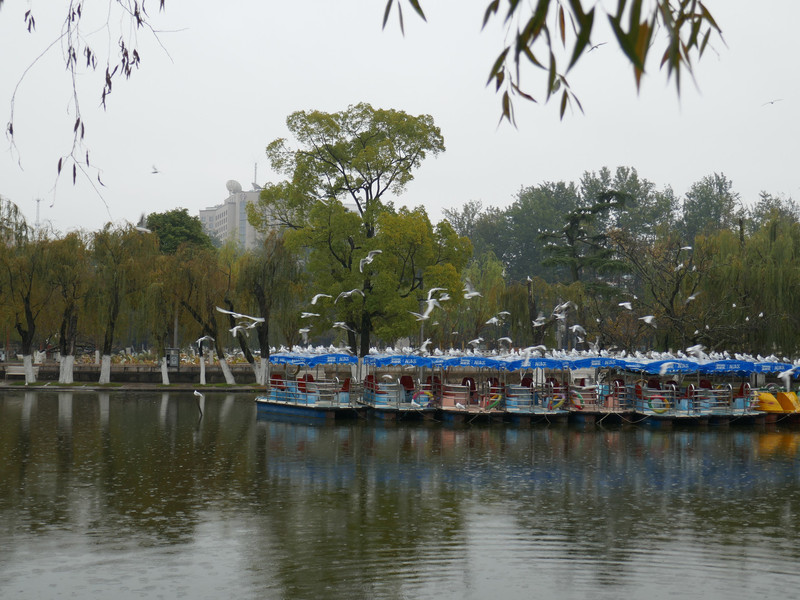

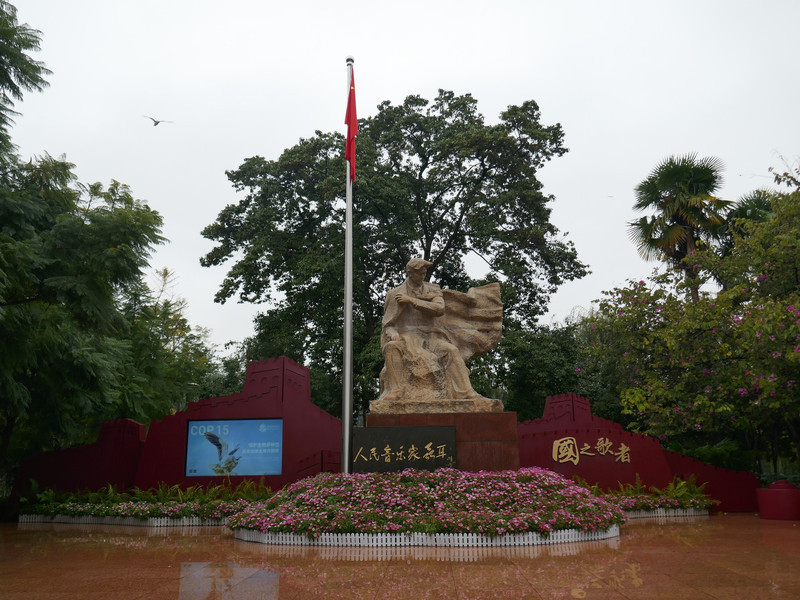
Nie 'er Square

Nie Er (1912~1935) was born in Yuxi, Yunnan Province, and was born in Kunming. People's musician and composer of the national anthem "March of the Volunteers". His music creation has a distinct sense of the times, serious ideological nature, and high national spirit. In September 2009, he was rated as "100 Heroes and Models Who Made Outstanding Contributions to the Founding of New China."




zigzag bridge







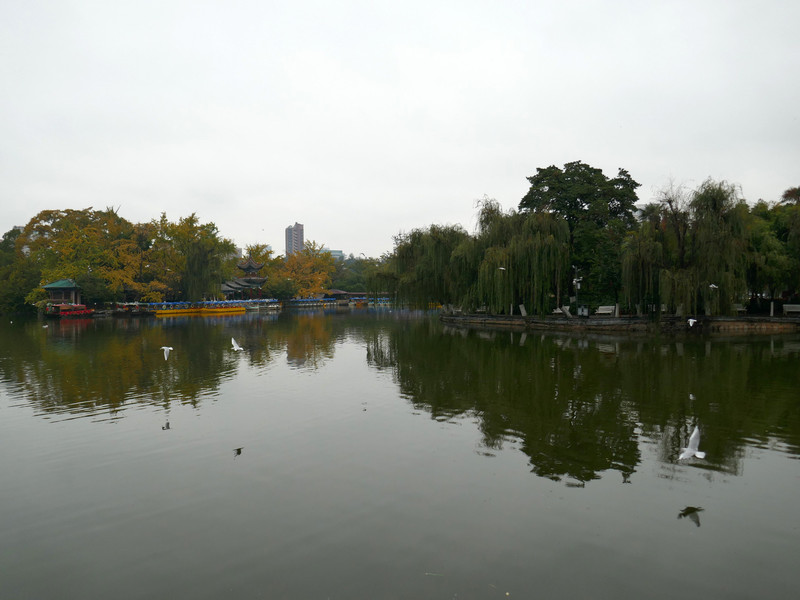






The Yunnan Army Lecture Hall and Cuihu Park are close together and are now a scenic spot, the Cuihu·Lecture Hall Scenic Area.


Yunnan Army Lecture Martial Arts Hall was originally a military school opened in 1909 in the Qing Dynasty to organize and train new army and strengthen border defense. At the end of the Qing Dynasty, it was also known as the three major military schools along with Beiyang Lecture Hall in Tianjin and Fengtian Lecture Hall in Northeast China; during the Republic of China, it was known as the three major military schools along with Baoding Army Officer Academy and Central Army Officer Academy (Whampoa Military Academy).

The main buildings include the main building courtyard, internal and external training playground, arsenal, auditorium, small garden, stable, etc. The main building is a Zouma Corner Building with soil, wood and stone structures that combine Chinese and Western. From its opening in 1909 to its suspension in 1935, nearly 10,000 students were trained. 1935-1945 In 1950, it was changed to the "Fifth Branch of the Central Army Officer Academy (Whampoa Military Academy)". In 1950, it was established as the Yunnan Branch of the Southwest Military Region Military and Political University of the People's Liberation Army. In 1953, it was changed to the Third Infantry School of the People's Liberation Army. In 1988, it was listed as a national key cultural relic protection unit, and the Jianwutang History Museum was established in 2009.


The theme exhibition of the museum is "The Cradle of Generals in Military Academy for a Century". It comprehensively introduces the founding background, military education system and historical role of the Hall through three aspects: "The Founding of the Hall","Glorious Achievements" and "Records of Generals".



School motto: Perseverance and hard work

I don't know if I don't see it. Commander-in-Chief Zhu De and Marshal Ye Jianying also studied here.




During the Republic of China, 19 classes were officially held, with a total of 8841 students.




Ye Jianying's graduation certificate

Jianwu Hall has cultivated many generals who have made great contributions to the independence, freedom and liberation of the Chinese nation, including Zhu De and Ye Jianying, the founding fathers of the country who made immortal contributions to the creation and development of New China; Generals Cai E, Tang Jiyao, and Li Liejun, who launched the "War of Protecting the Country" to oppose Yuan Shikai's perverse actions and restore the imperial system; During the Anti-Japanese War, General Zhou Baozhong, a general anti-Japanese coalition general who persisted in the war of resistance in Baishan and Heishui, Long Yun, who organized more than 400,000 people from Yunnan to fight against the war, General Lu Han, who led his troops to bathe blood in Taierzhuang and promoted the peaceful liberation of Yunnan, and Commander Zeng Zesheng, who led his troops to fight for the peaceful liberation of Changchun, etc.

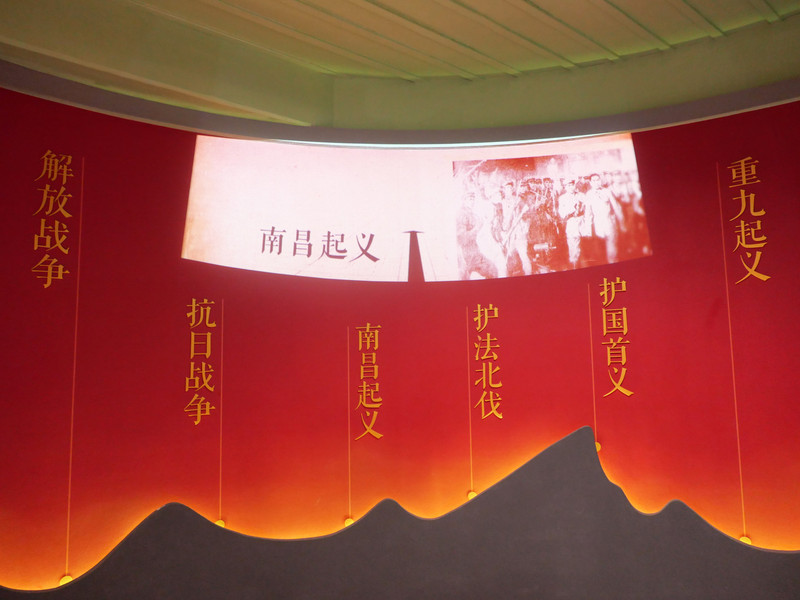
The teachers and students of the Jianwu Hall made significant contributions to the country and nation in the Revolution of 1911, the Uprising to Protect the Nation, the Northern Expedition, the Anti-Japanese War and the War of Liberation in Yunnan, and a large number of military commanders and military generals emerged. Therefore, Zhu De called the Yunnan Army Jianwu Hall the "revolutionary melting pot" in his book "Memories of the 1911".





The Xima River is said to be named after Zhuge Liang led his army to the south during the Three Kingdoms era. He once washed his horses in the river. Because he missed the thatched hut in his hometown, he got the place name Simao.



Kunming Sany International Chapel


The government office building in Wuhua District, Kunming City looks like a pagoda when viewed from Renmin Middle Road.

It's time to return


Yunnan-Guizhou Plateau is shrouded in clouds and mist

Overlooking the Omega Bend River over Hunan and Jiangxi


National Convention and Exhibition Center (Shanghai)"Four-leaf Clover"


got home safely

thanks for reading
Previous Article:"In spring, we walk south of the colorful clouds" In the New Year of 2014, an 18-day journey in northern Yunnan
Next Article:Nanchang-Kunming-Dali-Lijiang-Shangri-La-Lugu Lake-Chongqing-Nanchang, self-driving 5702.1 kilometers in 16 days
